Where to See Native Australian Animals: an Epic Australia Roadtrip
When I was a kid growing up in upstate New York, I had a big map of Australia on my wall. It was covered with illustrations of native Australian animals to show where they lived. Australia was literally the farthest place away from me in the entire world and it was filled with bizarre creatures, the likes of which I had never seen.
At age 12 I couldn’t imagine anything more exotic or foreign or adventurous than traveling across this alien landscape in search of kangaroos and echidnas and Tasmanian devils.
Twenty years later I had the opportunity to make that dream come true. If you too dream of seeing native Australian animals in their natural habitat, follow along on my my epic Australia roadtrip, learn where to see native Australian animals, and pick up a few tips for traveling around Australia on a tight budget.
Traveling Australia on a Budget
I was on a pretty tight budget for my Australia road trip, but I still managed to cover a lot of ground. Here are a couple tips for cheap transportation in Australia.
1) Buy a Vehicle and Then Resell it. Cristina and I used this technique on our 7-month tour of southern Africa and it worked great. Through an ad on Gumtree we bought a 4×4 pickup that was outfitted for wilderness adventures (long range fuel tank, water tank, storage drawers etc.) for about $5000 US. At the end of our trip I resold it for the exact same price! There you go, a free vehicle. Of course you need to have five thousand bucks in your account to make this work in the first place. If you do have the cash available and you’re going to be spending more than a month on your Australia roadtrip then this is definitely a good option. Gumtree is a great place to search for 4×4’s in Australia (click here to see a huge list.)
2) Caravan Relocations. I used this technique on my Australia roadtrip and it was amazing. Camper rental companies often need to move their recreational vehicles from one office to another. Rather than hiring a driver and paying for the gas, they instead charge a customer a dollar a day for the rental, or some tiny amount, and let them pay for the gas! It’s really a win-win.
There are a few catches though. Relocations, also known as “relocs”, are always one-way. You have to string together a series of relocations to get from place to place, which turned out to not be that difficult in my case. Also you are given a limited number of days to get there and a limited number of kilometers. Basically you have to keep moving without a lot of dilly dally along the way. Otherwise you’ll get charged for extra days and kilometers.
Lastly, make sure you have some money available in case you have to pay a deposit or additional insurance. It may take a while for this deposit to show up back in your account at the end so if you have a really tight budget, be careful! On the plus side, you basically have a free vehicle and free lodging! Plus you have a place to cook so you’ll spend less on food. You can even find free campsites in many places, though they will have basically no amenities. If you want to stay at a campground or RV park (generally called a caravan park in Australia) you can expect to pay about US $30 a night. I used relocations from Perth to Darwin (10 days) and from Darwin to Alice Springs (3 days) and it was awesome! A couple sites you can use to search for relocations include transfercar.com.au, coseats.com, and hippiecamper.com.
3) Rent a Car with a Tent. I found a car rental company in Alice Springs that offered tent rentals along with the car. OK, this is more of a cheap lodging option than a cheap transportation option, but still a great concept for budget travelers.
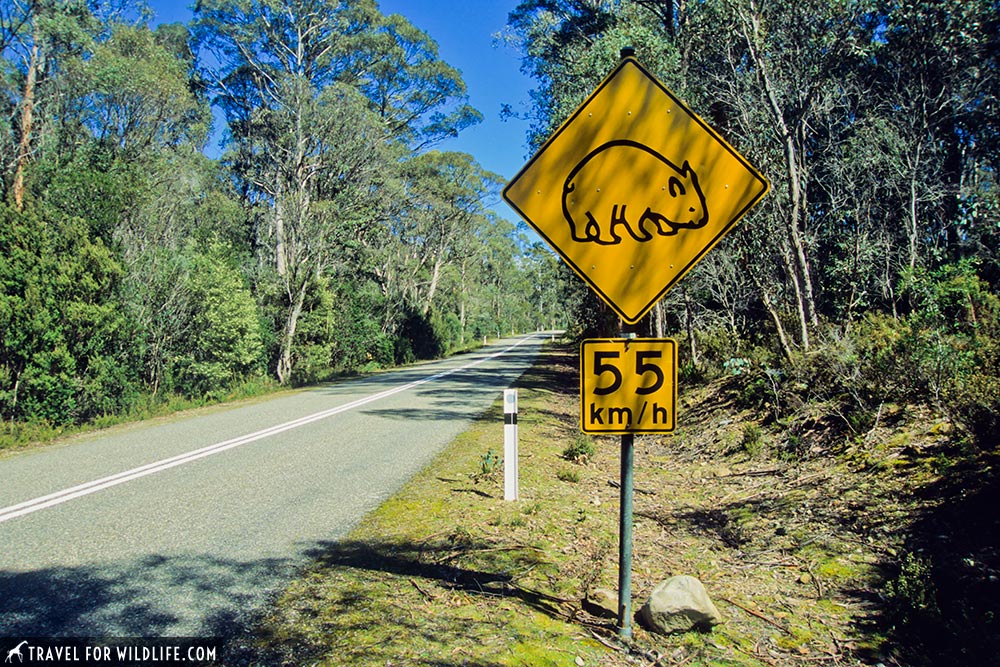
My Ultimate, 1-Month, Native Australian Animals Roadtrip Itinerary
I decided to spend a month in Australia as part of a round-the-world trip. I had tickets to fly into Perth and out of Sydney but had no idea what I was going to do in between other than look for Australian animals. My only guide was the Lonely Planet Watching Wildlife Australia. Here’s what I came up with for my Australia roadtrip and the animals I saw.
Transportation Methods
- Leg 1 was a camper relocation from Perth to Darwin (10 days).
- Leg 2 was another camper relocation from Darwin to Alice Springs (3 days).
- Leg 3 In Alice Springs I rented a car with a tent to visit Uluru (5 days).
- Leg 4 was riding the legendary Ghan train from Alice Springs to Adelaide (2 days).
- Leg 5 I rented a car in Adelaide, took it on a ferry to Kangaroo Island, drove to Melbourne, took an even longer ferry ride to Tasmania and back, and then drove to Sydney (11 days).
My Favorite Australian Wildlife Destinations Along my Route
- Dryandra Woodland
- Shark Bay & Monkey Mia
- Kakadu National Park
- Alice Springs & Uluru
- Kangaroo Island
- Lake St Clair National Park, Tasmania
- Wilsons Promontory National Park
A Quick Note about the Weirdness of Australian Wildlife
Before we get started, it’s worth pointing out what is so weird about Australian wildlife. Most mammals on Earth today (including you and me) are placental mammals meaning we develop inside a placenta in our mother’s womb. However, every native mammal in Australia is a marsupial mammal (other than bats who flew there, or marine mammals who swam there, or a few mouse-like rodents who hitched a ride at some point). Marsupials are born as a tiny undeveloped embryo and must climb into a pouch and latch onto a nipple in order to survive.
As a very old and isolated patch of land, Australia has been an incredible cauldron of marsupial evolution for more than 60 million years. Here, marsupials have diverged into a spectacular array of shapes and forms, filling the same ecological niches as placental mammals on other continents. There is one even weirder exception to this rule and that is the bizarre monotremes, the egg-laying mammals. Of the five remaining monotreme species on Earth (4 echidna species and the platypus) all of them are found here in Australia and nearby New Guinea. Some consider the Dingo to be native to Australia, but most studies conclude that this descendent of the domestic dog (who is in turn is a descendent of the wolf, another placental mammal) was brought to the continent with human settlers roughly 4,000 years ago.
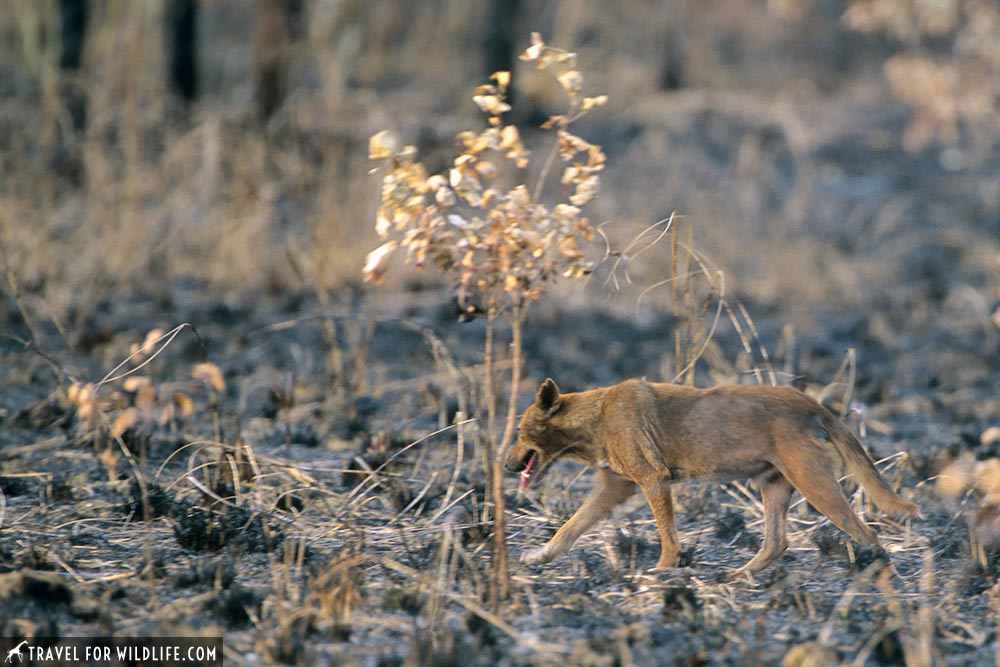
On the other side of the coin, non-native mammals, introduced by European settlers, have run amok in Australia and have decimated the native populations in their path. Some of the most destructive examples are European rabbits, dromedary camels, the red fox, and feral horses, cats, goats and pigs. The first humans (arguably another non-native mammal) seem to have set foot on this isolated land a mere 65 thousand years ago.
Leg 1: Perth to Darwin
I arrive in Perth and find a caravan relocation to Darwin. I have 10 days to get the camper to Darwin (which is really far away!) but I still choose to take a quick detour south to Dryandra Woodland first.
Dryandra Woodland
I read Dryandra is one of the best places in the southwest for viewing native Australian animals and I’m not disappointed. I camp at the Congelin Campsite in Dryandra which is the only place to stay within the reserve at the time. (Now there is a new campground called Gnaala Mia.) One of my very first sightings is one of the world’s strangest animals: the Echidna! Echidnas are monotremes, which means they are mammals that lay eggs!
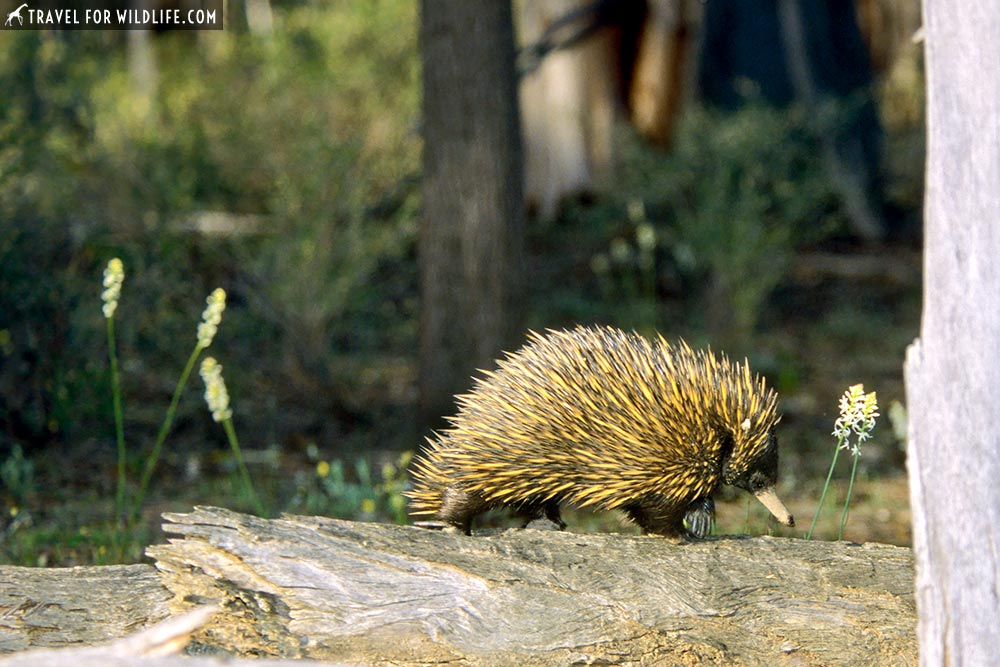
Then I get my first look at the most iconic of the native Australian animals: a kangaroo! They’re hopping through the woods and meadows and grazing on grasses. It is amazing to watch them move, bouncing along effortlessly or walking slowly with their heads to the grass using the end of their tail as a fifth foot. One of the first I see is a mother Western Gray Kangaroo with a baby (also known as a joey) in her pouch!
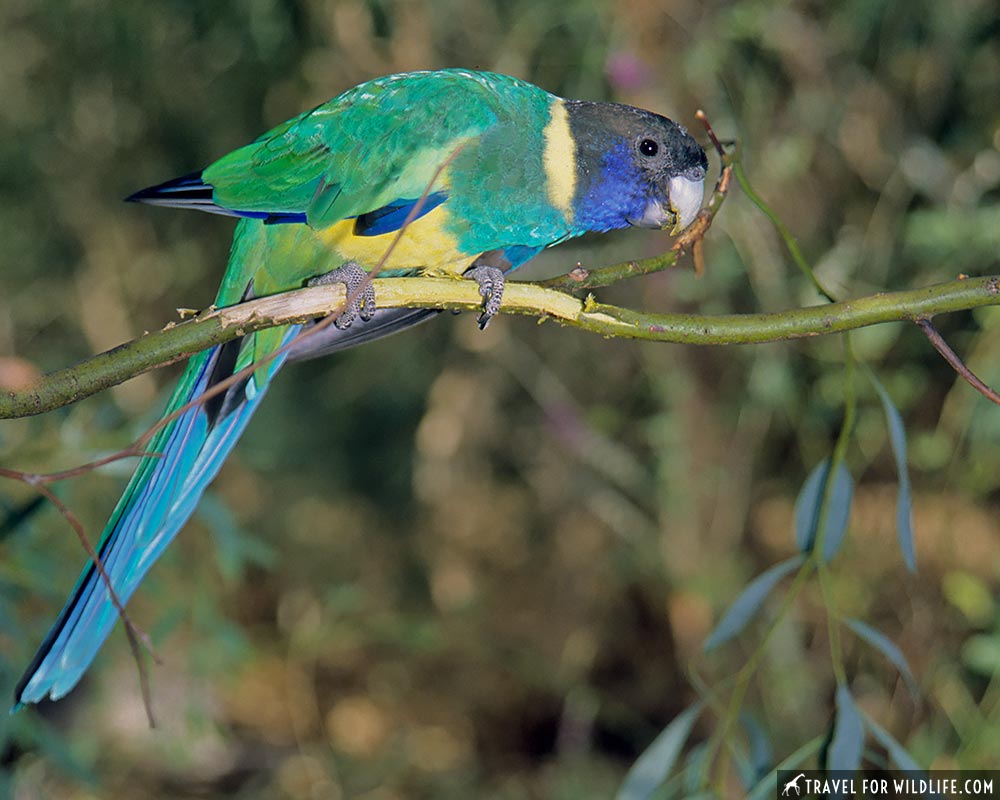
I search for the famous Numbats (one of the few animals that start with n) but I don’t manage to spot one. Instead I see several beautiful Australian Ringneck parrots feasting on flower buds and four Shingleback skinks! These fat lizards, commonly known as Bobtails, have a bright blue tongue and stout little bodies with stumpy tails. Thanks Dryandra Woodland!
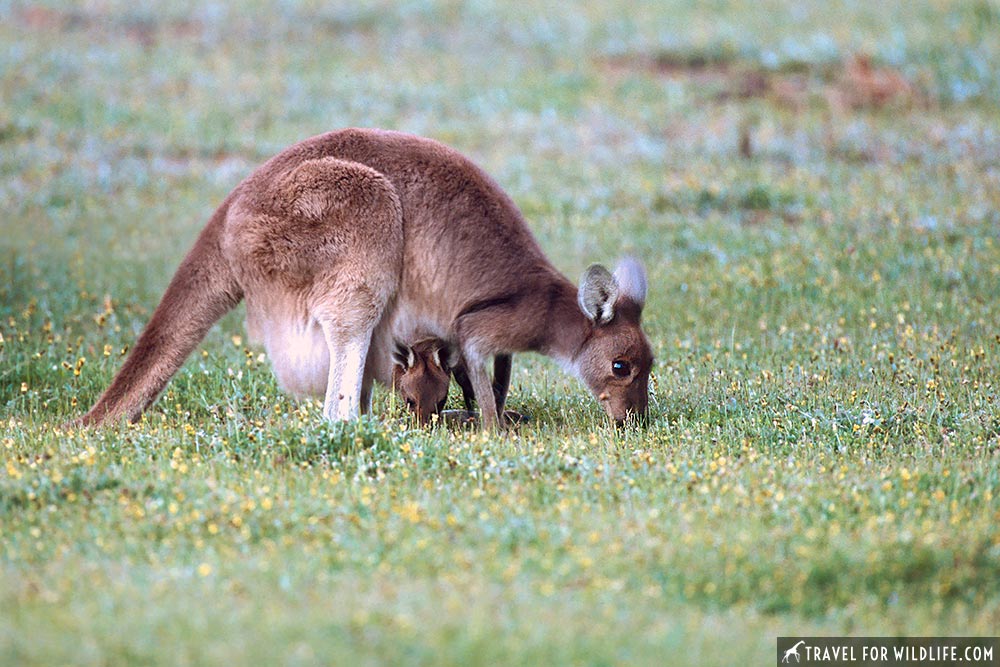
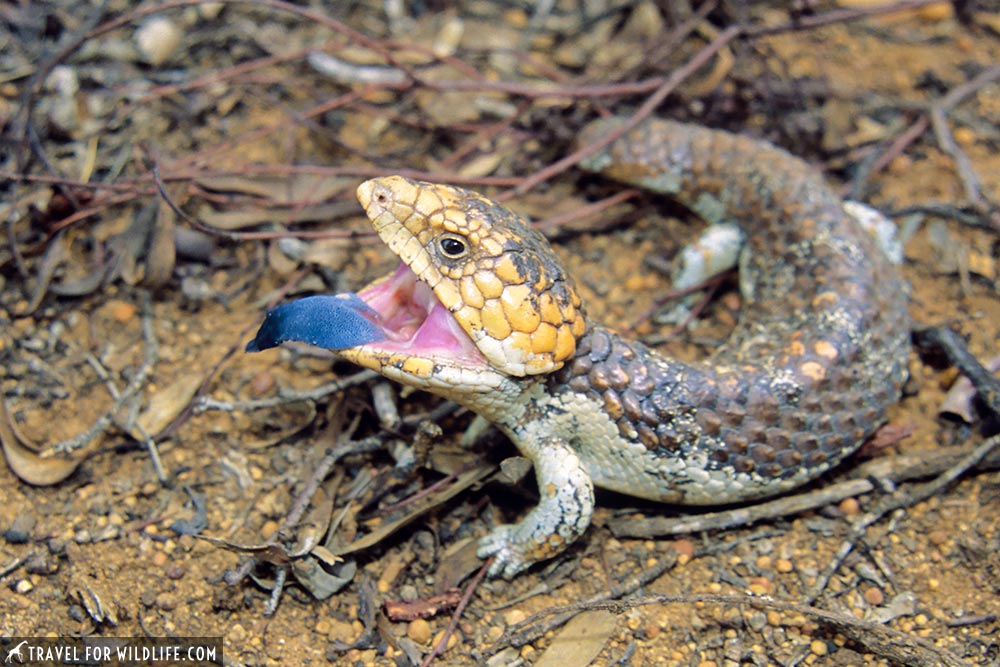
The Pinnacles & Lake Thetis
Driving north I arrive in Cervantes and find a caravan park. The next morning I visit Nambung National Park to see the famous Pinnacles formations. They are really cool but the flies are pure torture. I manage to photograph one of the beautiful Australian parrots, a male Galah perched on top of one of the pinnacles but then I must hightail it back to the camper doing the ‘Australian salute’ all the way (waving flies away from my face).
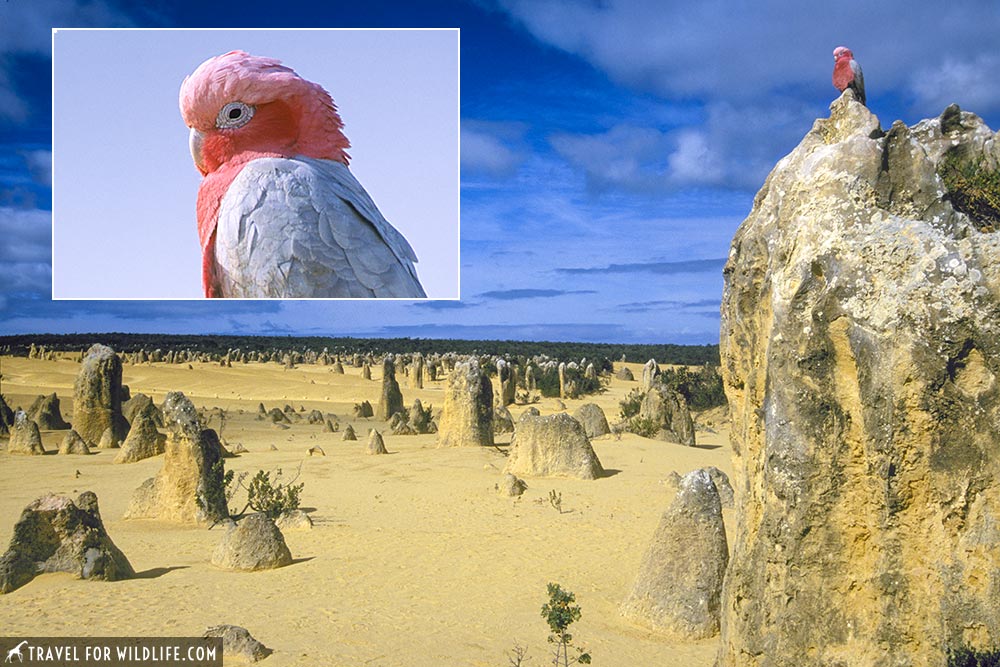
On the way out I visit nearby Lake Thetis to see something incredible. They may not look like much at first glance, but Stromatolites are one of the most astonishing creatures on the planet. That’s because they are living examples of some of the oldest life forms from 3.5 billion years ago!
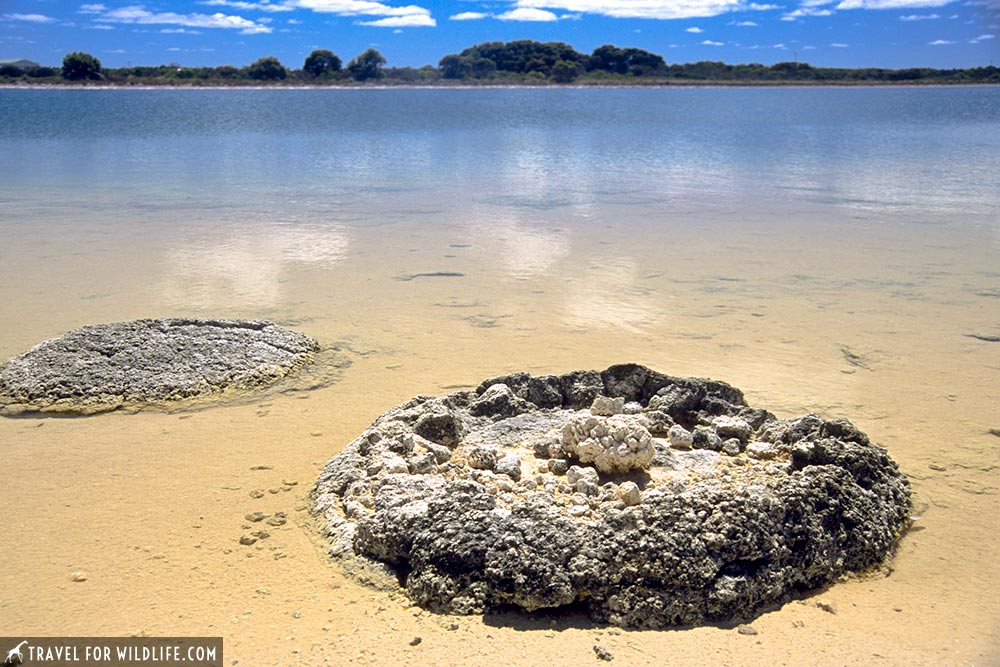
A stromatolite is a limestone structure created over thousands of years by a colony of Cyanobacteria, a blue-green algae. These particular stromatolites are probably about 2,000 to 3,000 years old! It is one of only a few sites on the planet where living marine stromatolites can be found. (If you miss them here then check out Hamelin Pool in Shark Bay on your way north.)
Shark Bay & Monkey Mia
I wake up at a caravan park in Monkey Mia and walk out to the beach to discover 50 people standing in a line knee-deep in the ocean. They’ve come to watch a park ranger hand feed wild Indo-pacific Bottlenose Dolphins. Behind them on the beach is a group of huge white Australian pelicans who are also getting fed scraps by fishermen.
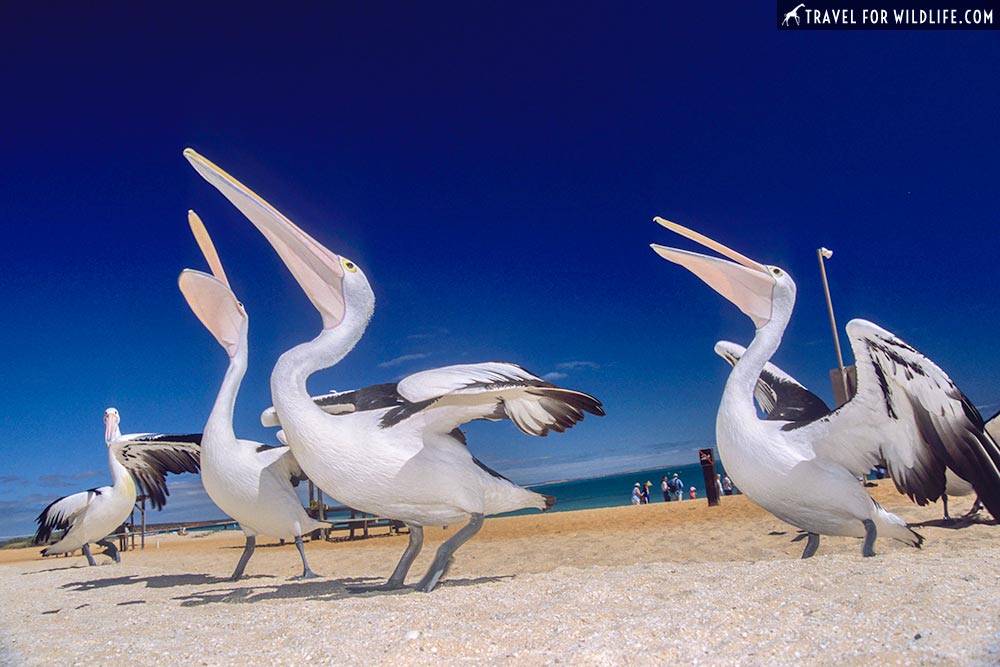
The Monkey Mia dolphin feeding has been going on for decades. Originally tourists were feeding the dolphins whenever they wanted. Now they allow some tourists to “assist in the feeding under the supervision of rangers.” Apparently only 5 recognizable adult females are now fed, according to the Shark Bay Dolphin Project. It is illegal to feed wild dolphins basically everywhere in the world. Why do they allow it here? They’ll tell you it’s for education but the fact is Australia has a long and sordid tradition of feeding wildlife, and these activities generate a lot of tourist income. By the end of my trip I will have run into at least 6 other wildlife feeding attractions around the country.
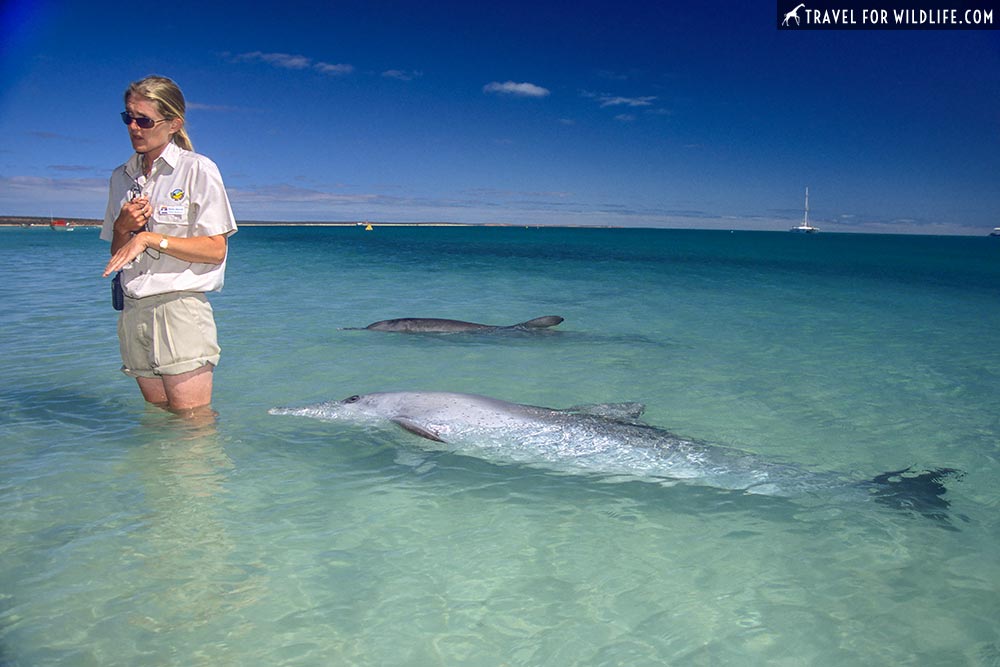
Personally I don’t condone any attraction that alters a wild animal’s natural behaviors for the entertainment of tourists, because more often than not it ends up being bad for the animals involved. A better option is to take a boat tour from Monkey Mia where you can watch dolphins behaving naturally, which I do. (See photo of mother bottlenose dolphin and her calf below.) The boat tour also gives me a great opportunity to see the rare Dugong, a marine mammal in the same family as the manatee. Dugongs are classified as vulnerable by the IUCN redlist. Woo hoo! Dugongs!
On my way out of Monkey Mia I stop in Nanga and spy the largest bird in Australia (and the second largest in the world): an Emu! I know it’s a male because of the long bare patch of blue skin on his neck. At first I think he’s walking alone but I soon notice movement in the tall brush around him. He walks out onto the road to reveal his brood of five babies! Yep, it is the male emu who incubates the eggs and raises the chicks. They look kind of like raggedy mops with legs. Super cool!
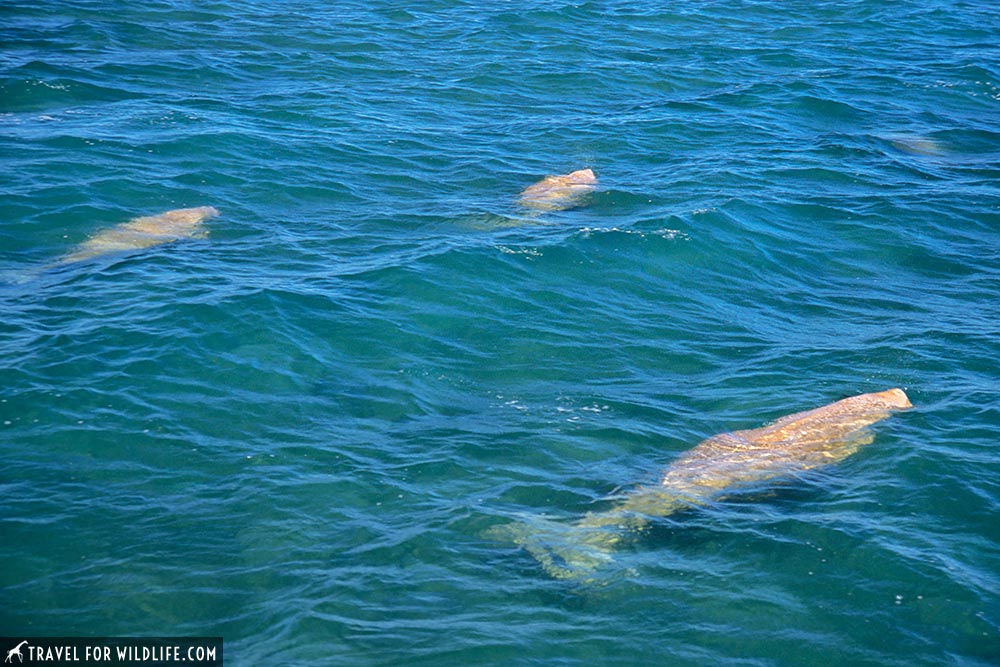
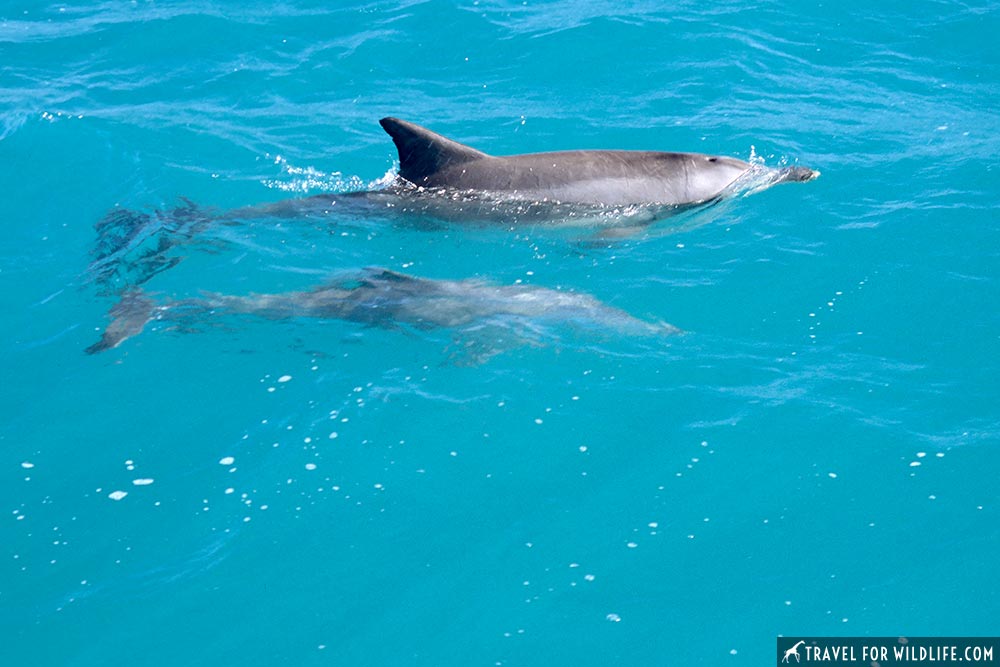
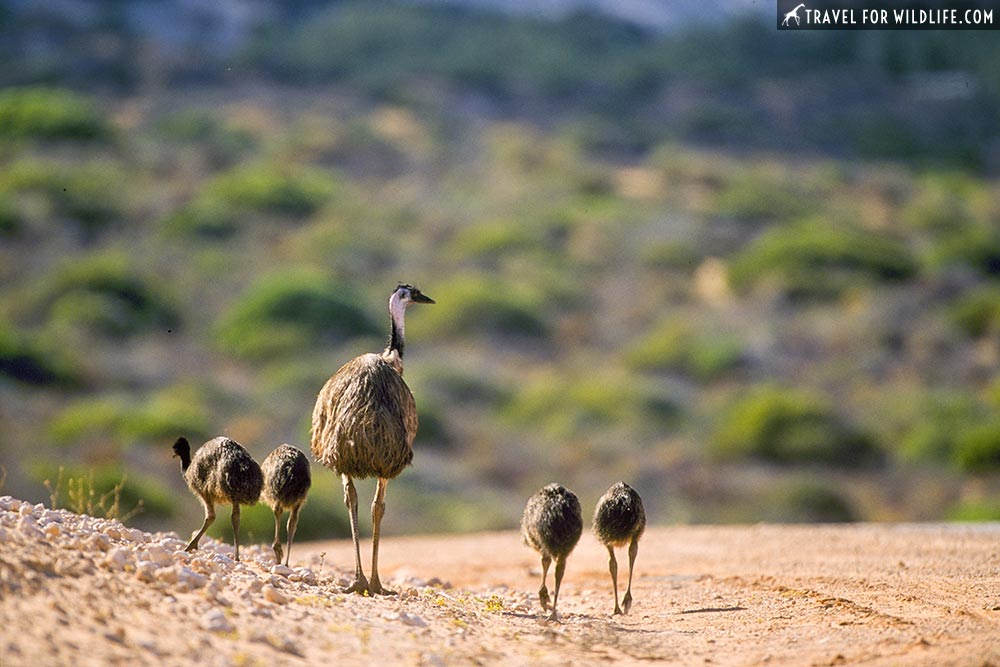
The National Animal of Australia
I must warn you, the drive up to Darwin is long and lonely. At first it seems romantic. Ah, the great Australian outback! Then it seems tedious. Are we there yet? Then it seems downright torturous. Holy crap it’s getting hot, get me out of here. While the landscape may seem completely empty, you are actually very likely to see the national animal of Australia: the Red Kangaroo. Unfortunately you’re not likely to see it alive. Instead you will see hundreds of carcasses littering the sides of the roads in every state of decay, from freshly hit to bleached white skeletons in mummified skin. Kangaroos forage at dusk, which is why you should not drive after sunset. You will kill kangaroos. That is why Australians have huge protective bars welded to the front of their trucks known as ‘roo bars. Sadly, dead kangaroos and wallabies along the side of the road will be a common site for my entire journey up to Darwin and back down to Alice Springs.
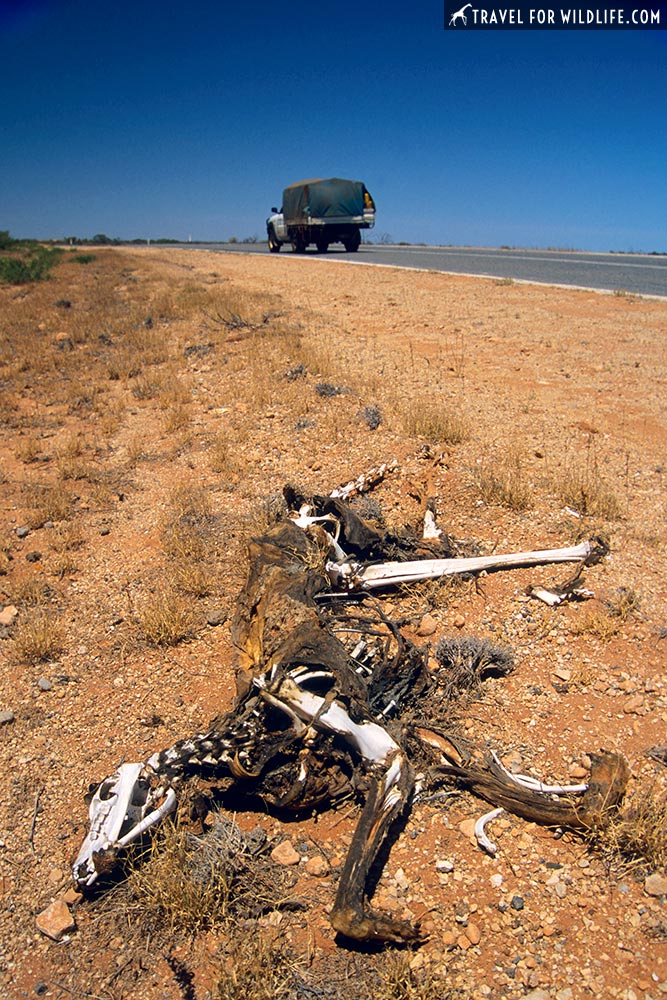
Broome
It’s worth stopping for a visit at the Broome Bird Observatory. The huge mudflats in Roebuck Bay attract a wide range of birds. Some of my favorites are a White-bellied Sea Eagle, Australian White Ibises and several Bluewinged Kookaburras. But even more fascinating to me are the amazing walking fish. Yes, this is a great place to observe Mudskippers in action. These amphibious fish have a host of adaptations allowing them to walk on land and stay out of the water for extended periods. They are flopping all around in the mudflats, opening their huge mouths to threaten each other, and leaping into the air. I believe I’m seeing blue-spotted mudskippers and bearded mudskippers. I guarantee that these will be some of the weirdest fish you’ll ever lay eyes on.
Broome is also a great area to start delving into Aboriginal culture (check out Magabala Books) or catch a flick in the world’s longest running open-air cinema: Sun Pictures, around since 1913.
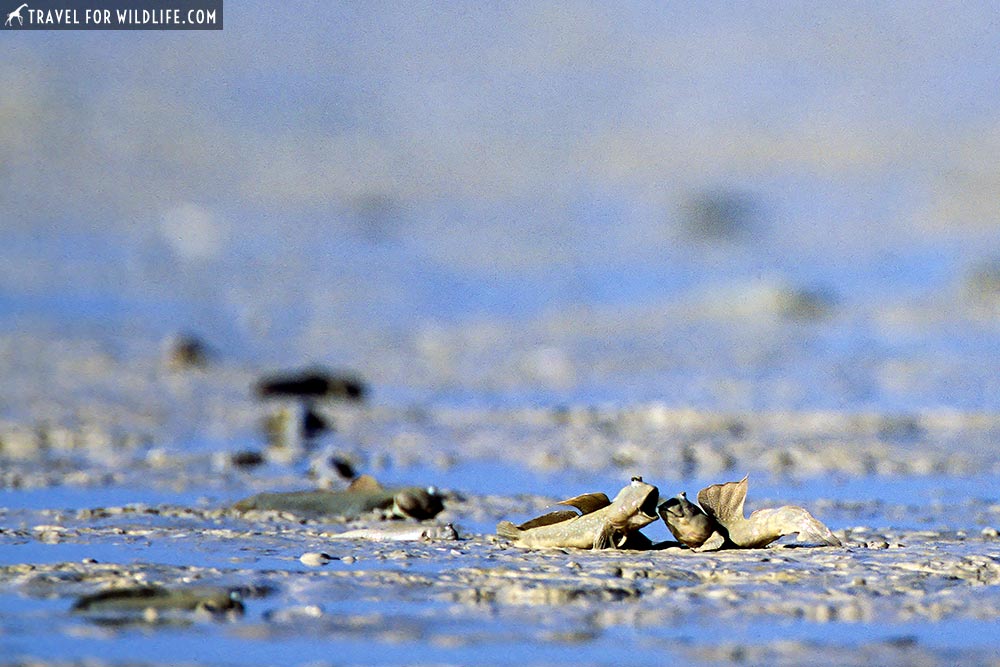
The Kimberly
Driving on into the Kimberly region I start seeing giant baobab trees and massive termite mounds standing like pillars. But even more exciting for me is the fact that I’ve officially entered crocodile territory! I spot my first little freshwater crocodile in Cockatoo Creek. I was hoping to see flying foxes at Geikie Gorge National Park but it’s getting late so instead I drive on and sleep at a picnic area on the side of road next to the Ord River.
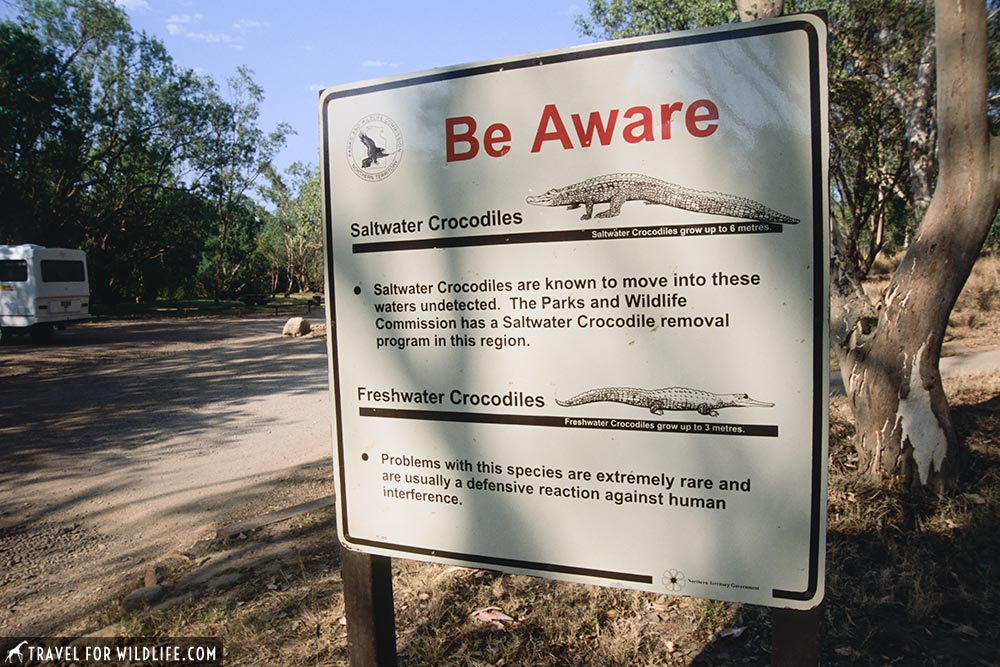
Katherine & Low Level Nature Reserve
I have a few more cool sightings on my drive to Katherine: Red-tailed Black Cockatoos, and Frilled Lizards running across the road on their hind legs! “We like our lizards frilled, not grilled” says the fire safety sign upon entering Northern Territory. That evening I arrive at a caravan park next to the Low Level Nature Reserve in Katherine. I get out of my camper and look up into the red sunset to behold an amazing sight, thousands of huge bats filling the sky, all flying in the same direction as they leave their camp by the river to seek out their nocturnal feeding grounds. These are Black Flying-Foxes, the biggest bats in Australia and some of the biggest bats in the world, with a wingspan of over three feet! In the morning I wander down to the river to search for their camp and instead discover a camp of Little Red Flying-Foxes hanging over the water. Like all mega-bats these are fruit eaters and get their common name from their cute fox-like faces. Although active by night, these fruit bats are definitely not sleeping. There is constant activity and noise in the camp and they are extremely entertaining to watch. I instantly fall in love with these adorable bats.
Leg 2: Darwin to Alice Springs
Darwin, the Adelaide River, & Feeding Wildlife
I was hoping to visit Litchfield National Park but thanks to mechanical problems in the caravan (a broken sway bar in the suspension) I must keep driving north. I’m a day early so I keep the camper for another day and check out Darwin. Here I encounter my next wildlife feeding attraction: Aquascene, where visitors pay to feed stale bread to fish in the ocean (milkfish, catfish, batfish, mullet, shovel-nosed rays & leopard rays). In downtown Darwin there is even a cafe where people are feeding who-knows-what to Common Brushtail Possums in a tree out front. Some of them look mangey and sick. This can’t be good for them. I get out of town and find a caravan park in the outskirts. By the way, it is really really hot up here (106 degrees today!)
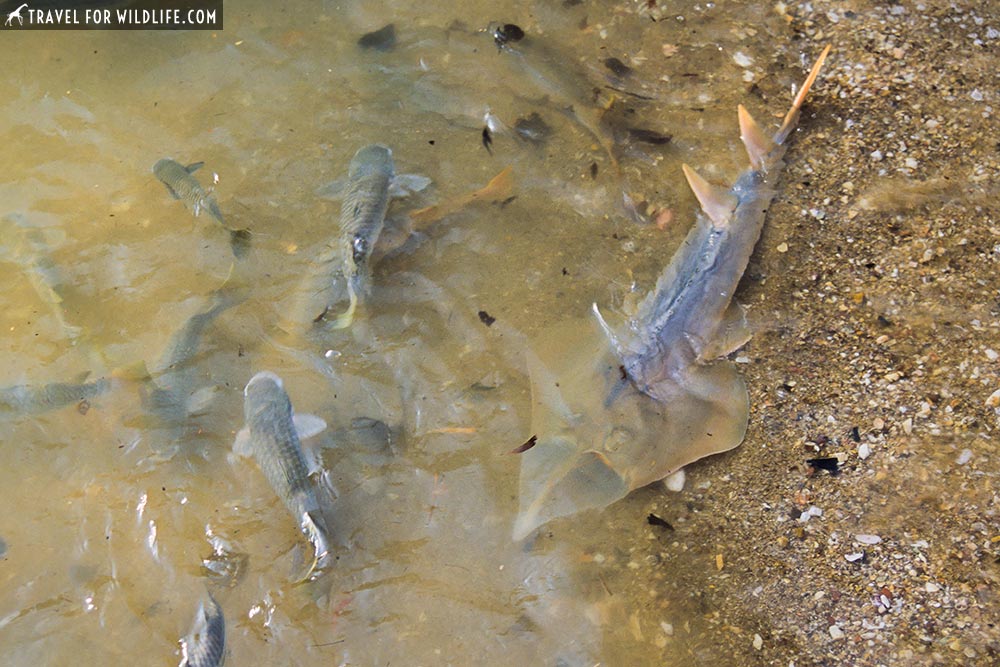
The next morning I return my camper and pick up a second caravan relocation that I must get to Alice Springs in 3 days. My first goal is to see the world’s largest reptile: the Saltwater Crocodile. The biggest individuals may grow up to 20 feet long! Unfortunately, the only apparent way to get out on the Adelaide River to see these prehistoric creatures is on a “jumping croc” boat tour. It doesn’t sound good, but I decide to go anyway and see what it’s like. It’s worse than I imagined. By dangling a meat lure tied to a string on the end of a stick, crocodiles are enticed to leap straight up out of the water and essentially hold themselves up vertically by treading water with their paddle-like tails. After several leaps, the guide lets them take it.
These wild animals have basically been trained like circus animal for the entertainment of tourists. While I enjoyed seeing crocs basking on the shore, I wouldn’t take one of these cruises again unless I find a more natural and respectful alternative. On top of that, they are also feeding wild kites and a sea eagle in the same manner. Come on guys, this isn’t necessary.
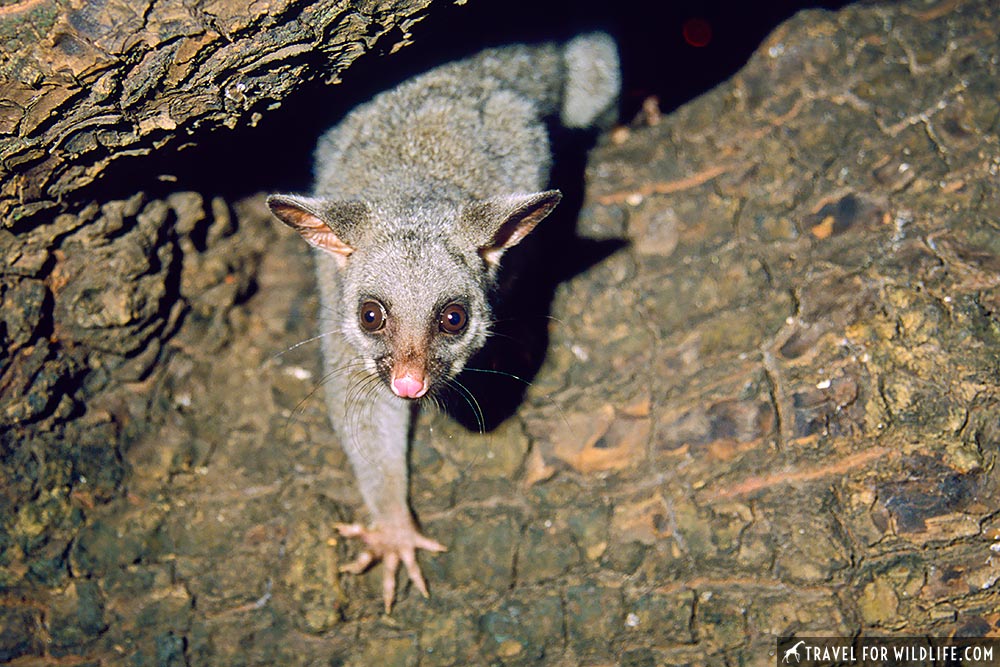
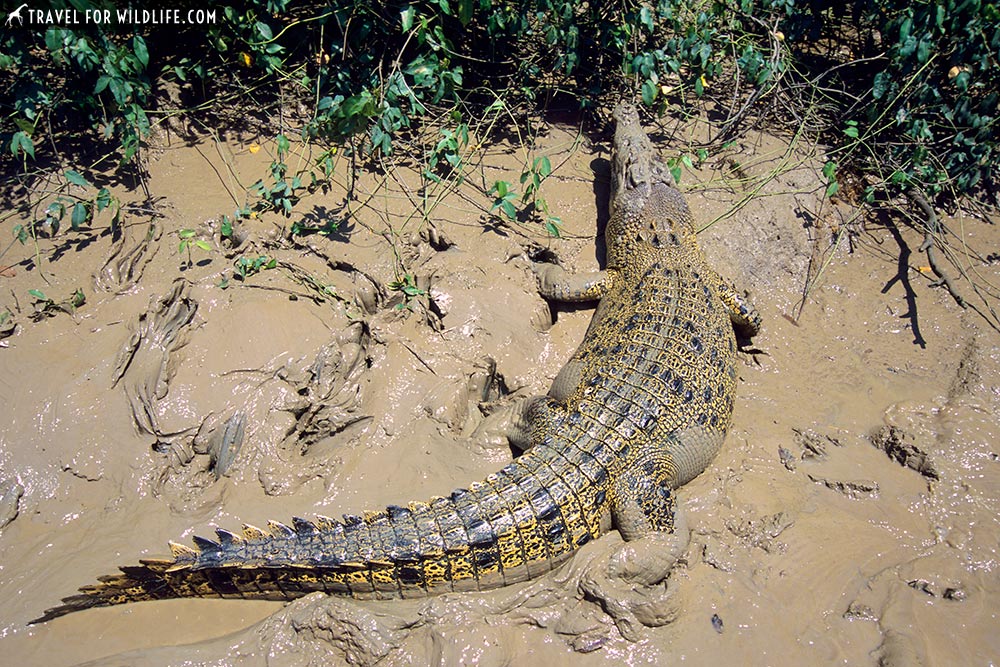
Kakadu National Park
As I drive toward Kakadu National Park I begin to see giant Cathedral Termite mounds standing more than 15 feet tall along the side of the road. Crikey! Inside Kakadu I visit the Mamukala waterhole on the South Alligator River floodplains blind, where I see Agile Wallabies galore. But my favorite discovery is a huge Yellow-spotted Monitor lizard foraging in the deep cracks of a dried mud bed, flicking its long pink forked tongue in and out to taste and smell its surroundings. That’s a big lizard! I sweat away the night in the Cooinda campground in Kakadu.
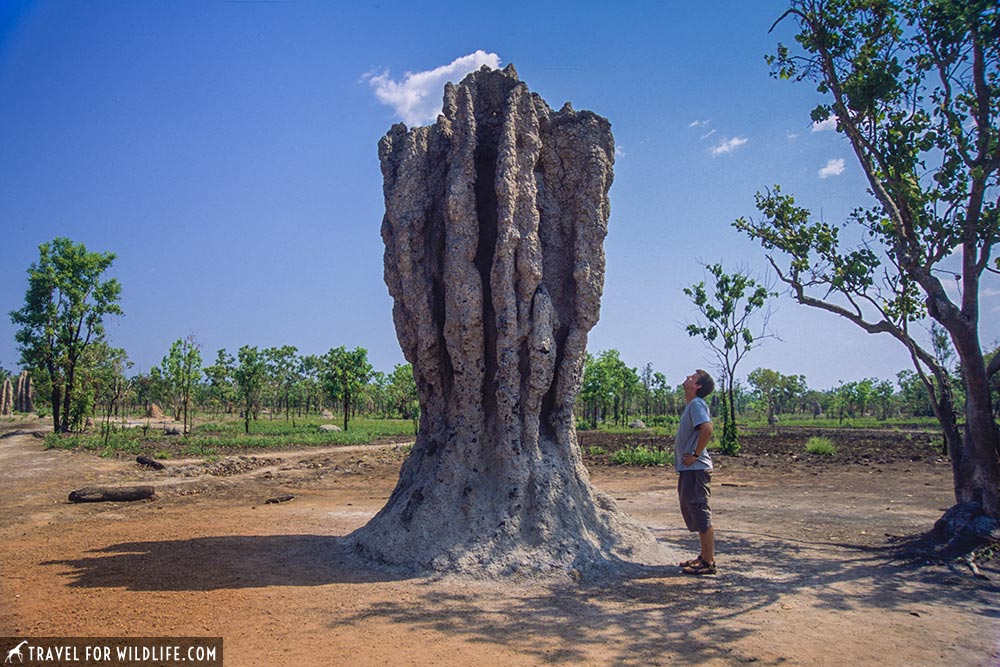
The next morning I walk the boardwalk at Yellow Water where I get my first look at the impressive Brolga, a crane that stands more than four feet tall. They are well known for their ritualistic mating dance where partners offer each other gifts like pieces of grass. I photograph one carrying a strange ball of soil and can’t help but wonder if it is a gift to a mate.
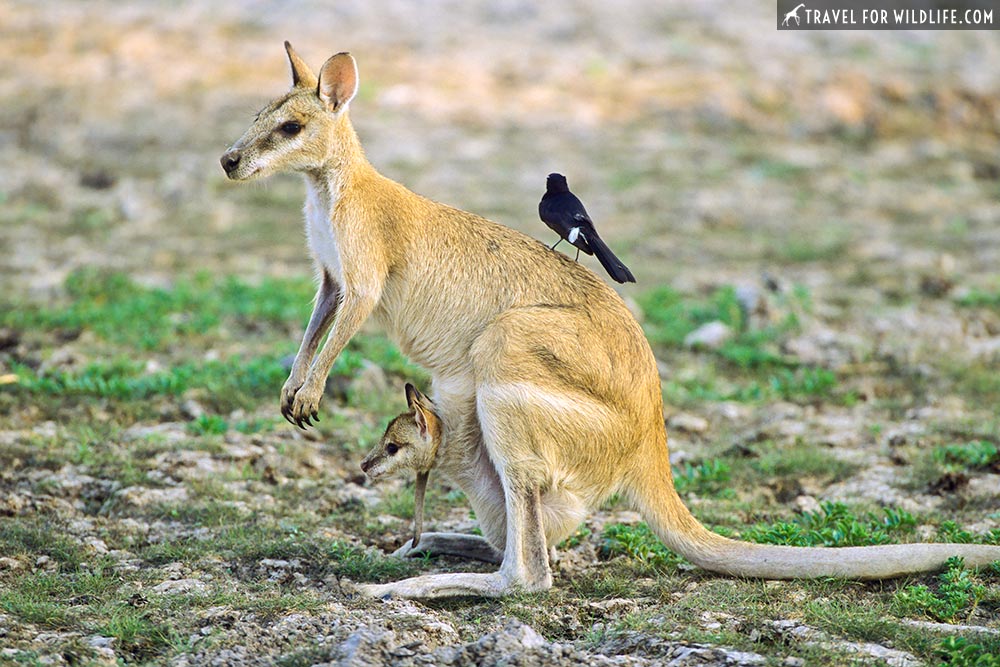
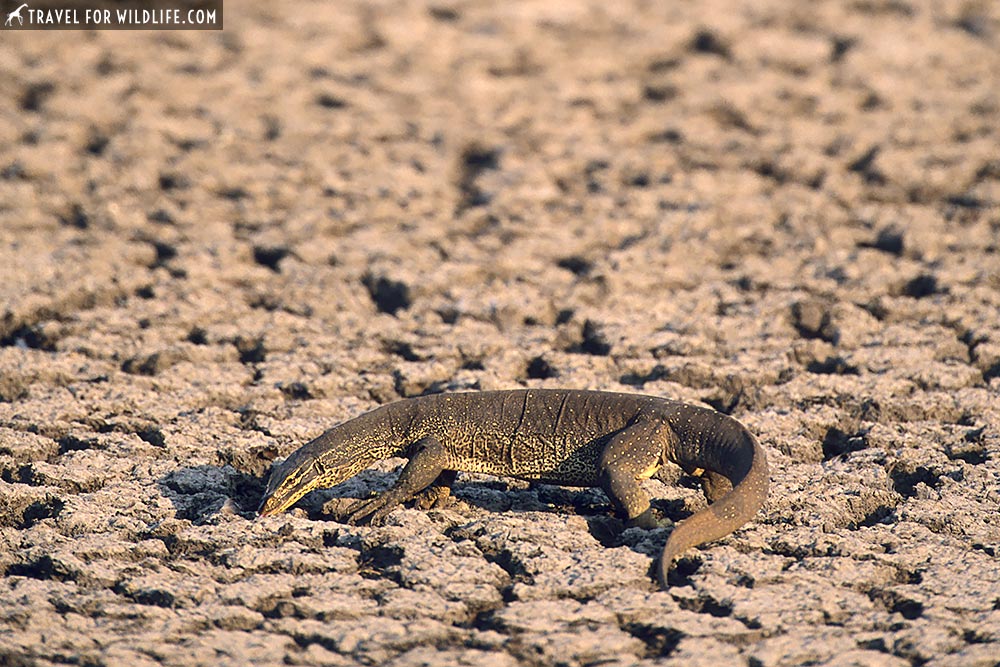
Leg 3: Alice Springs & Uluru
On the long drive south to Alice Springs I again see a road-killed kangaroo every two minutes. Occasionally they are being scavenged by crows or a massive Wedge-tailed Eagle. To break up the monotony of red sand and dried yellow grass I visit Devil’s Marbles, stop at Australia’s UFO capital Wycliffe Well, and admire aboriginal art at Ti Tree. Finally I cross the Tropic of Capricorn and hope that I’ve left the sweltering heat of the tropics behind me. In Alice Springs I settle into the Heavitree Gap caravan park. In the shop they sell food to feed the Black-footed Rock Wallabies that live in the steep rocky slopes behind camp. They call it “Wally Chow.” Ugh.
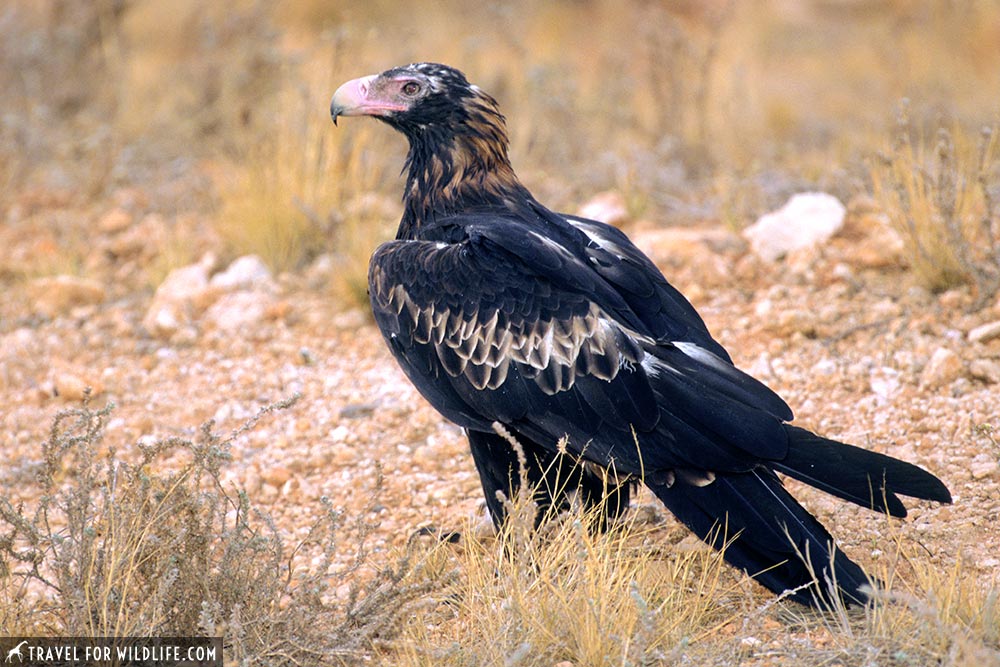
The next morning I return my second camper and pick up a local rental car for five days. I have my heart set on spotting a special little reptile, the very sweet but horrible-looking Thorny Devil. I drive all the way around Uluru and Kata Tjuta but no luck. The next day, same routine, same disappointment. I don’t even see any kangaroos except for the kangaroo crossing signs near Uluru. (One of my 20 favorite animal crossing signs in the world.) That night I dine under the stars on the Sounds of Silence dinner tour. It’s outrageously expensive but, admittedly, really cool. Or maybe it just seems that way because I get incredibly drunk on never-ending champagne. At my dinner table a young punkish fellow recognizes me from my BMX days and invites me to stay with him and his girlfriend in Adelaide. Free housing!
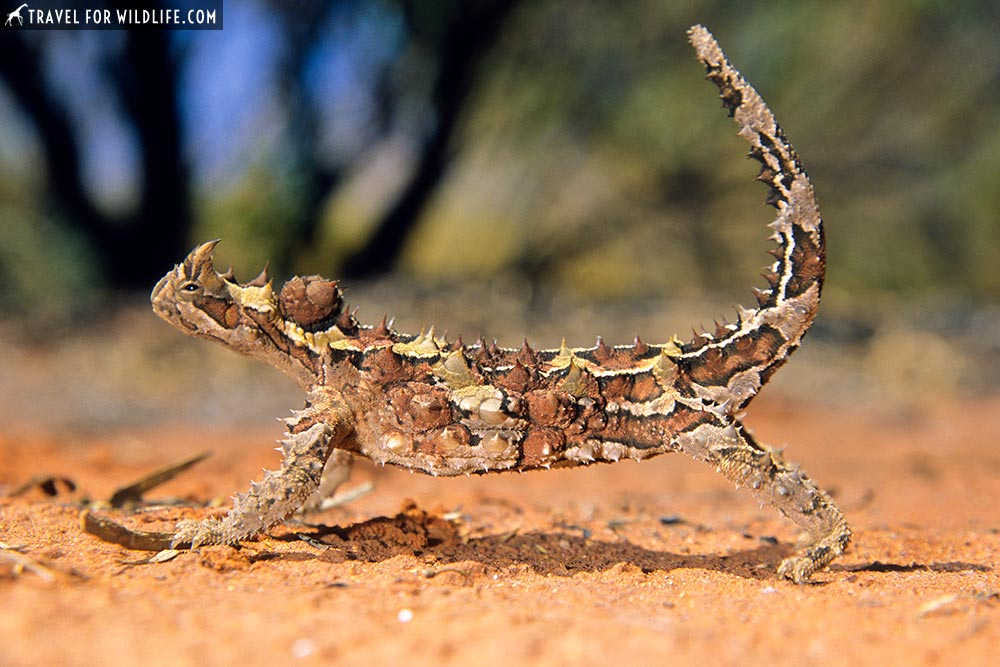
Finally, on my way back to Alice, I spot a small lizard crossing the road to Watarrka National Park. It’s the very creature I’ve been hoping to see: a Thorny Devil! He’s smaller than I imagined but even more fanciful-looking, with strange knobby spikes protruding all over his body. I help him out of the road so he won’t get hit, and shoot a few photos in the red desert sand. He’s extremely cooperative but I leave him alone and drive on with a huge smile on my face.
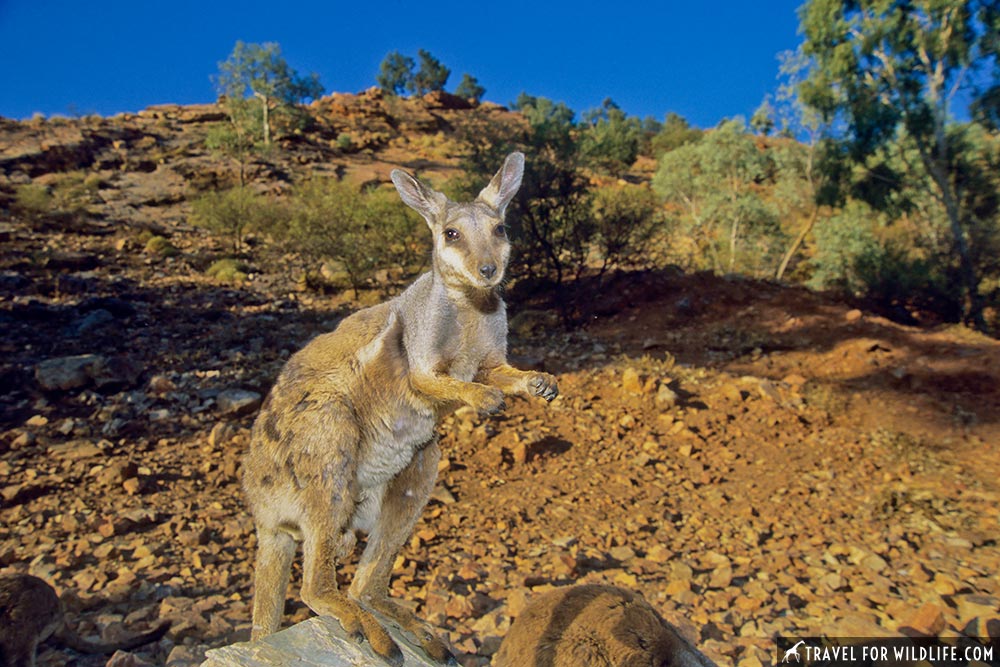
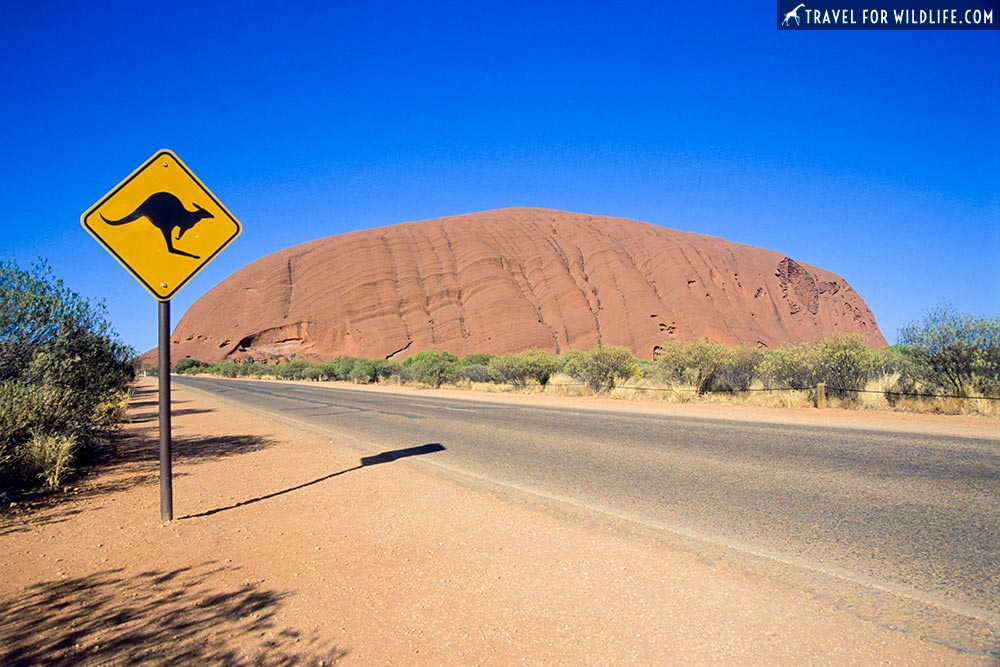
Leg 4: The Ghan Train
After returning my car in Alice, I board “the Legendary Ghan” train to Adelaide. It is legendarily bad, unfortunately. In its early days the Ghan was chronically late (28 days in one case) and my journey is no exception. The smell in my car is awful, the food service is terrible, and the train stops in the night for two hours due to mechanical difficulties. When I exit the train the following day I’ve left the bush behind and have entered the shining city of Adelaide.
Leg 5: Adelaide – Tasmania – Sydney
Warrawong Wildlife Sanctuary, Adelaide
I pick up another rental car and spend a couple days poking around Adelaide. Every Australian city I visit seems cleaner and nicer than any city in America. While in Adelaide I visit the Warrawong Wildlife Sanctuary. It happens to be closed when I arrive but from the viewing platform in back I spot a stunning pair of Rainbow Lorikeets and my first Brush-tailed Bettong, also known as a Woylie. This miniature kangaroo is a critically endangered species and is being bred for reintroduction to a few small isolated populations. It is exciting to see one of these incredibly rare animals in the flesh. (The sanctuary has since gone through a few different incarnations and is no longer assisting with woylie conservation, but the woylie recovery plan is still underway.)
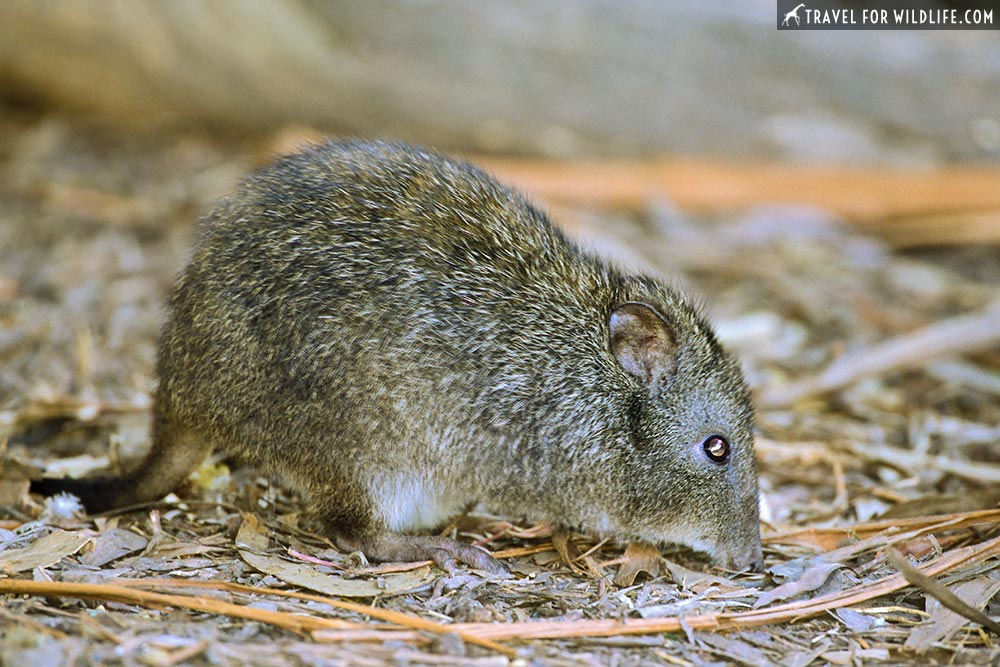
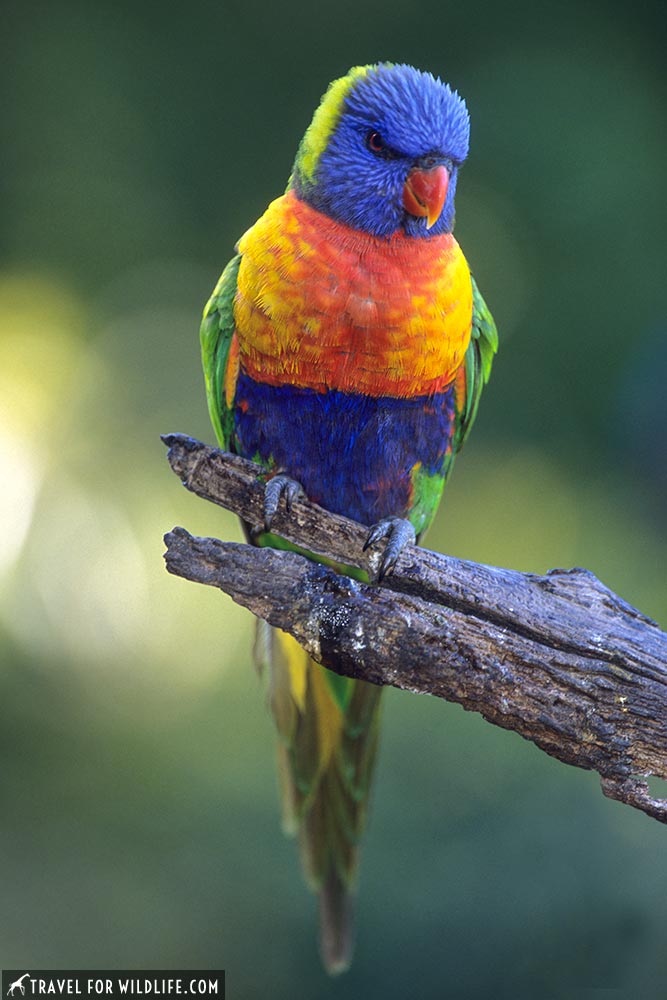
Kangaroo Island
Due to my last-minute planning I must board a freight ferry to Kangaroo Island. 45 minutes later the sheep and I land in Penneshaw. After a quick lunch in charming Kingscote, the oldest settlement in South Australia, I drive to Seal Bay to take a guided beach tour and visit the Australian Sea Lions. They are lounging sleepily on the beach and being generally cute. The tour guide takes the group down to the beach but keeps us at a respectful distance. Way to go Seal Bay!
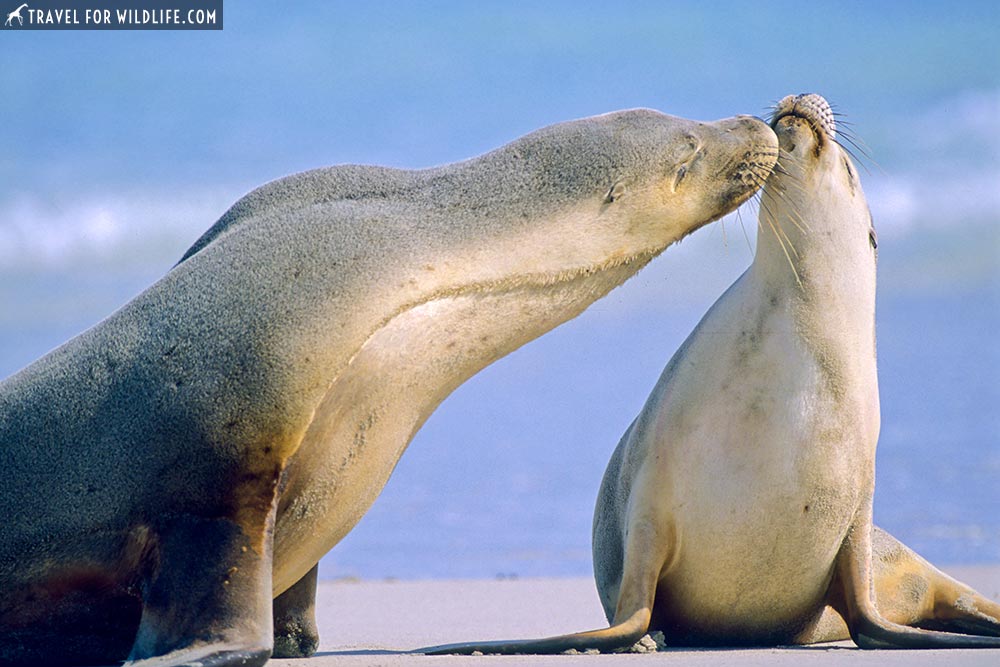
By late afternoon I arrive at the Flinders Chase National Park visitor center. It’s closed now but in a tree next to the parking lot I get my first glimpse of what is probably Australia’s second most recognizable animal: the Koala! They slowly reach for leaves and munch like sloths until one suddenly leaps with reckless abandon from one branch to another. Woah! I had no idea they could move like that! In the grassy meadows Cape Barren Geese are pooping everywhere and large Western Gray Kangaroos graze lazily. This is an endemic subspecies of western gray kangaroo, darker and shaggier than its mainland cousins.
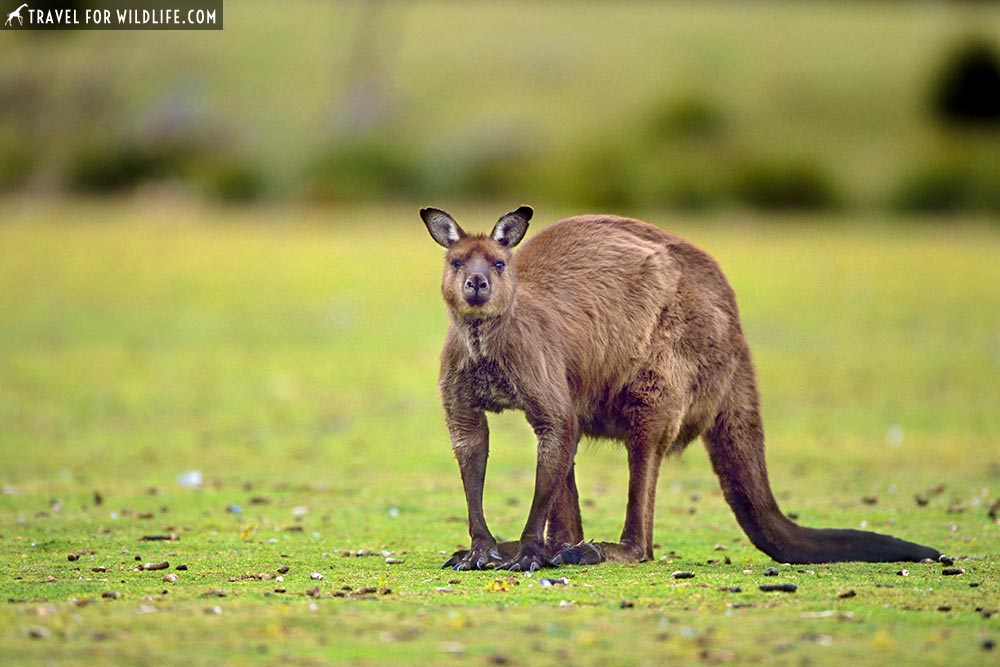
I still have one dream animal that I’m really hoping to see here so I drive to the Platypus Pools Trail and hike out to the viewing deck to look for one of the world’s most unlikely creatures, the duck-billed platypus. Take a muskrat and glue a black duck bill to its face, sew a beaver tail to the back, add webbed frog feet, and throw in a venomous spur on the hind feet. And oh yeah, it lays eggs. Other than the four species of echidnas, the platypus is the only remaining egg-laying mammal on the planet (known as monotremes). I wait patiently til dusk, scanning the surface of the quiet pond but see nothing. Don’t worry I tell myself, you’ll get another shot in Tasmania.
In the morning I walk the trail behind the Flinders Chase visitor center to see more Koalas, including one with a baby clinging to her belly. Mostly they sit curled in cozy balls high in the eucalyptus trees. I make my way to Admiral’s Arch to see the New Zealand Fur Seal colony. This time of year the males are lounging along the rocky shoreline while the females are out fishing. In a few months, when the females return to give birth and raise their pups, the dominant males will have a chance to breed. On the way back to Penneshaw I stop at Duck Lagoon to see my first ever Black Swans and their cygnets (young swans) on the appropriately named Cygnet River.
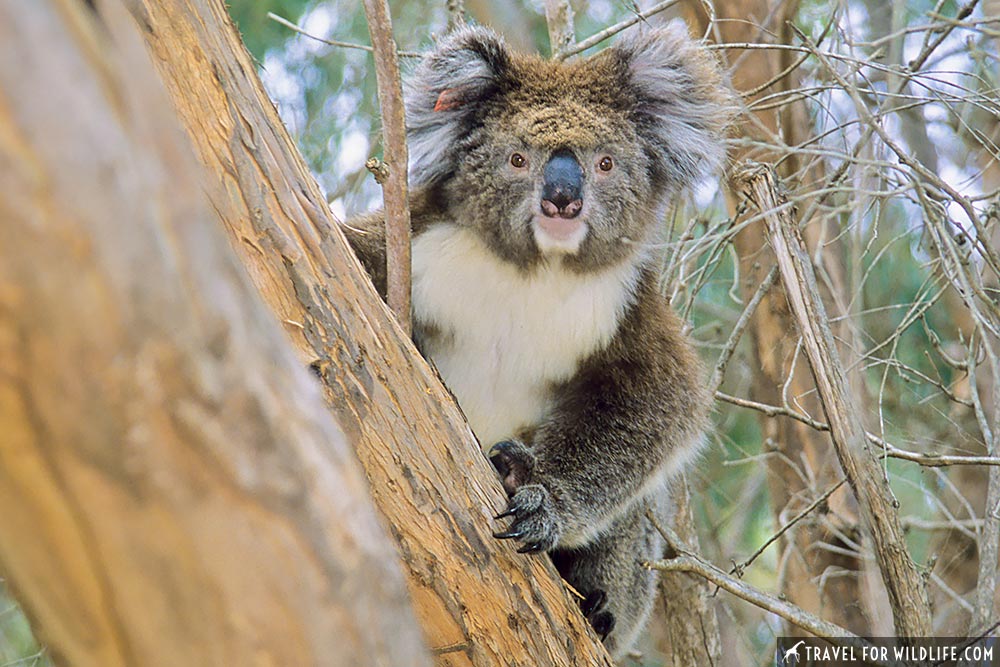
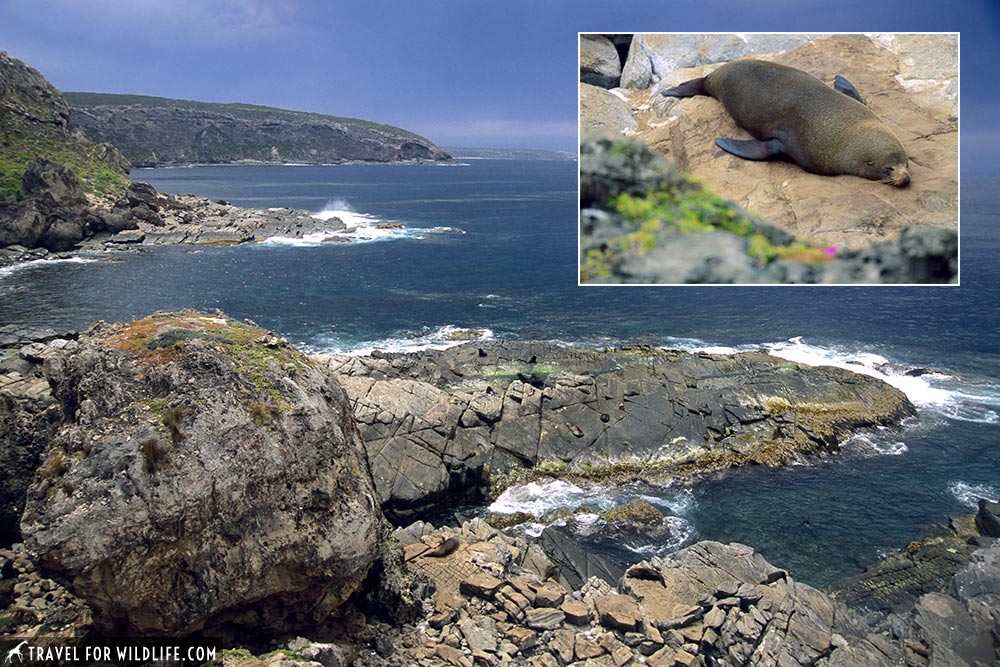
Arriving in Penneshaw after dark, I check into the youth hostel and walk the local streets in search of one of Kangaroo Island’s most famous residents, the Little Penguin. After spending the day hunting for fish out at sea they are now returning to their burrows in Penneshaw’s neighborhoods. I hear the hee-hawing sound and within minutes discover the little blue rascals scuttling around under a bush in a nearby yard. These are the world’s smallest penguins and at hardly a foot tall they could barely peck me in the kneecaps if they tried. Kangaroo Island is now officially my favorite wildlife destination in Australia. You can also spot these little guys on one of these night safaris in Australia.
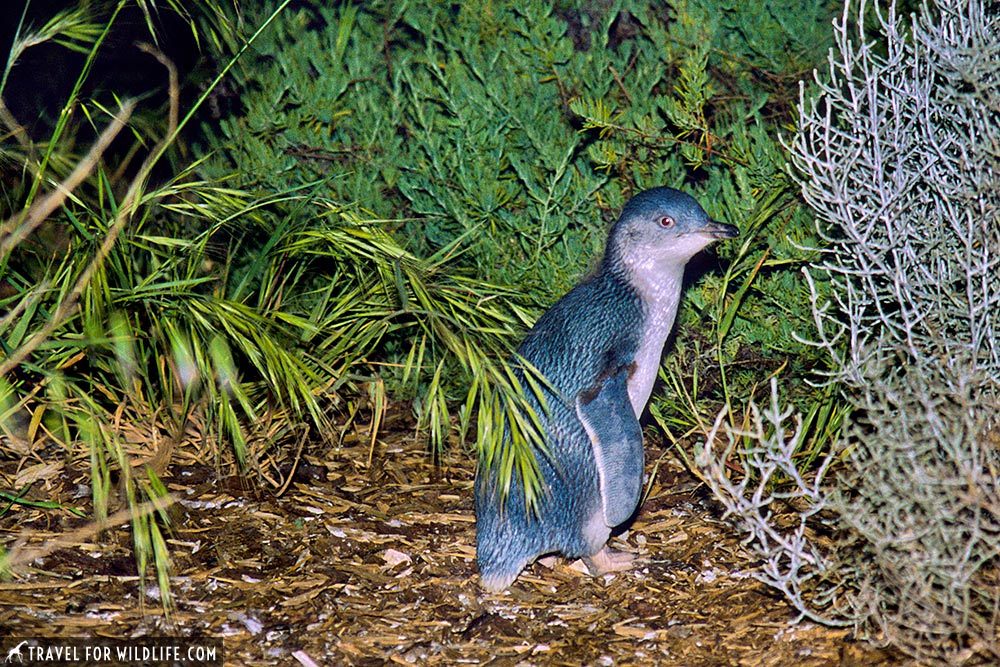
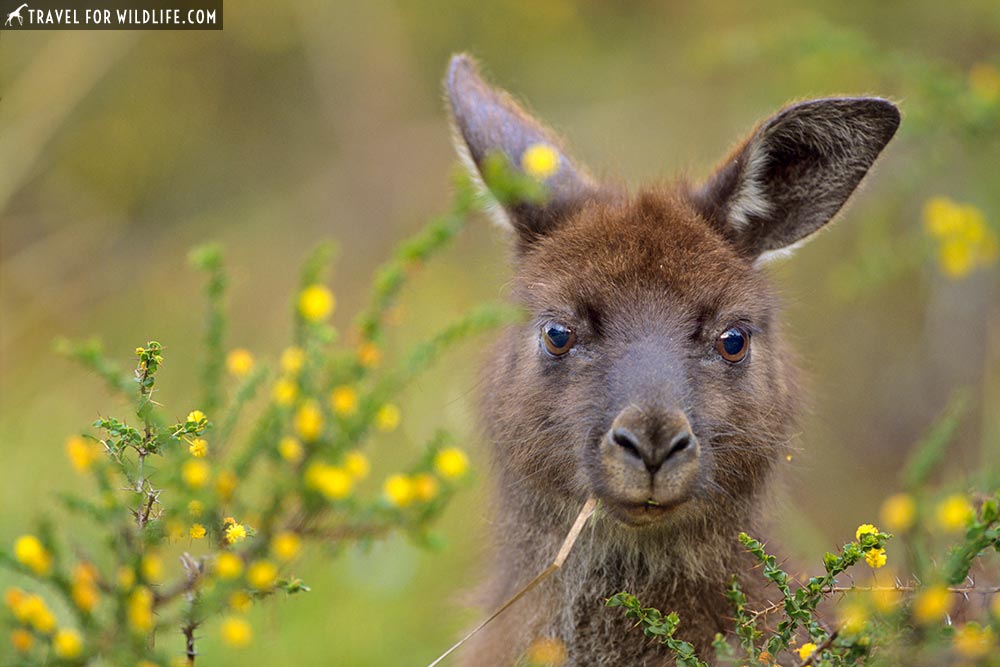
If you want to visit Kangaroo island to see its amazing wildlife but would rather have a local guide, there are a couple of wildlife tours in Australia that will take you there.
Between Adelaide and Melbourne
Upon returning to the mainland, I drive along the coast toward Melbourne. My only sighting is “the big lobster” in Kingston SE before bedding down at the Gordon Hotel in Portland. In the morning I visit the Point Danger Australasian Gannet Colony (wow, they’re really packed in there!) and spot some Yellowbilled Spoonbills and a Black Swan w/cygnets in Warrnambool. Stunning coastal formations pop up all along the Great Ocean Road and at 7:35 PM I slide into the ferry dock in Melbourne. As the Spirit of Tasmania pitches and rolls across the black waters of the Bass Strait I try my best to sleep on a padded bench in the lounge.
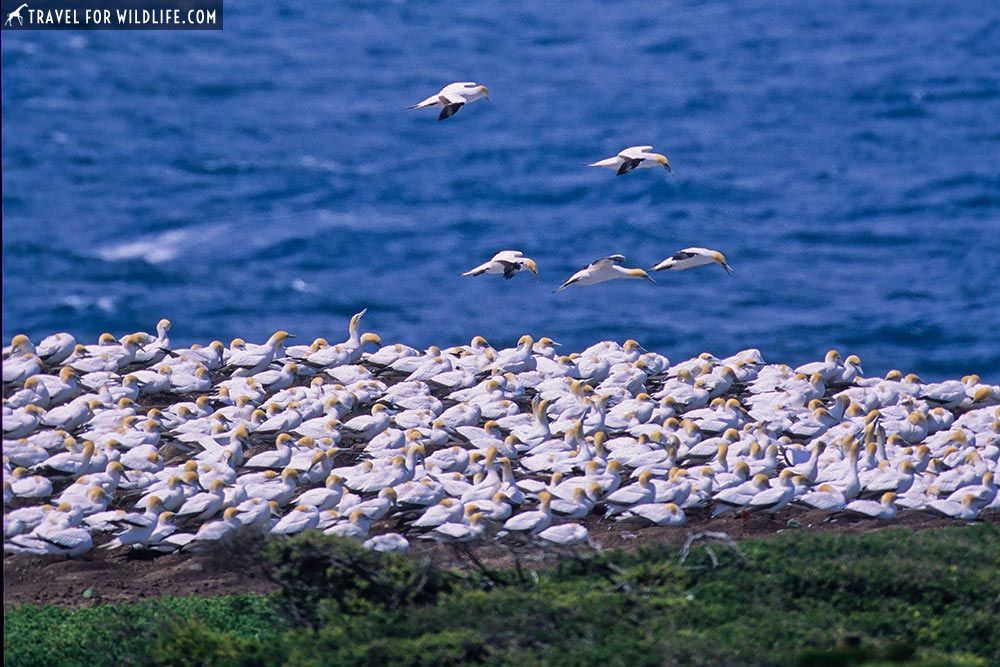
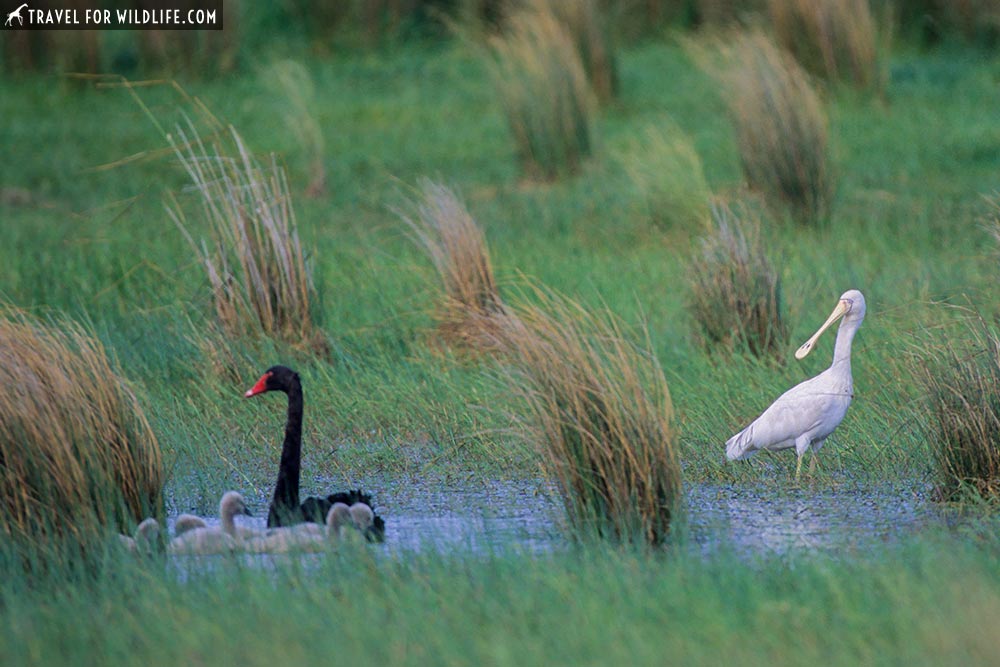
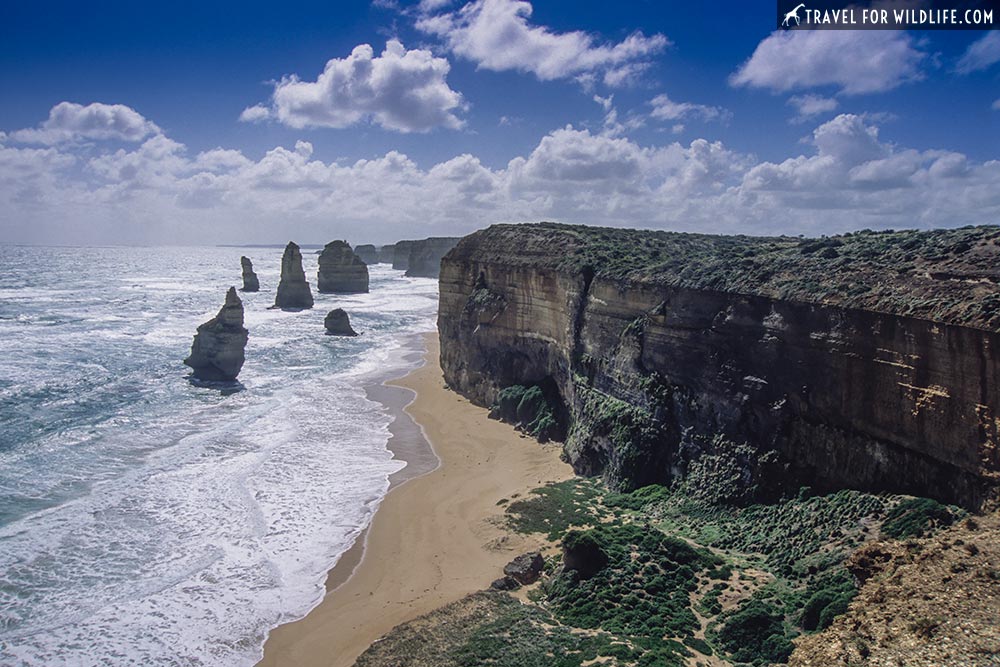
Tasmania Road Trip in 2 Days
When I awake I’m in the magical land of Tasmania. The cold misty forests and snow-capped mountain peaks seem an entire world away from the Top End’s tropical heat. I drive across Tasmania top to bottom in 7 hours. Taking a scenic route to Hobart, I pass by the shores of Great Lake. My dream is to see Tasmania’s most famous inhabitant, the Tasmanian Devil. But like the Red Kangaroo, the only one I lay eyes on is dead on the road. As saddening as it is, there’s still a tiny glimmer of hope inside me from seeing first-hand evidence that this endangered carnivorous marsupial persists in these woods.
Passing through Hobart I take a road to the southernmost point of Australia and see the Whale Lookout sculpture. But no actual Southern Right Whales are making an appearance so I eat dinner in Hobart and continue my Tasmania road trip northward to Lake St. Clair National Park. I see another Echidna crossing the road and then get my first look at a real live Wombat! It is munching loudly beside the road and quickly waddles off into the bush. The Lake St Clair area is famous for Platypus so I pull over to check a nearby lake at sunset. Again I wait and watch the still, quiet water but nobody shows. I book a room at the Derwent Bridge Wilderness Hotel and go back out for a spotlight drive. No Tasmanian devils but I do catch my only glimpse of a Tasmanian Pademelon, a small member of the kangaroo family. Not bad!
The next morning in Lake St Clair National Park I get to hang out with a very relaxed Red-necked Wallaby in the picnic area before walking the trail to Platypus Bay. This is my last shot for a platypus sighting but the fates are against me. Heading west through the Cradle Mountain area I am surrounded by snow-covered peaks and I catch a glimpse of a shiny black lizard on a rock. It is a Northern Snow Skink, one of the few truly alpine lizard species on the planet. I see a few more echidnas before arriving back at the ferry in Devonport. This time I have my own cabin for the return crossing. I am ridiculously thrilled.
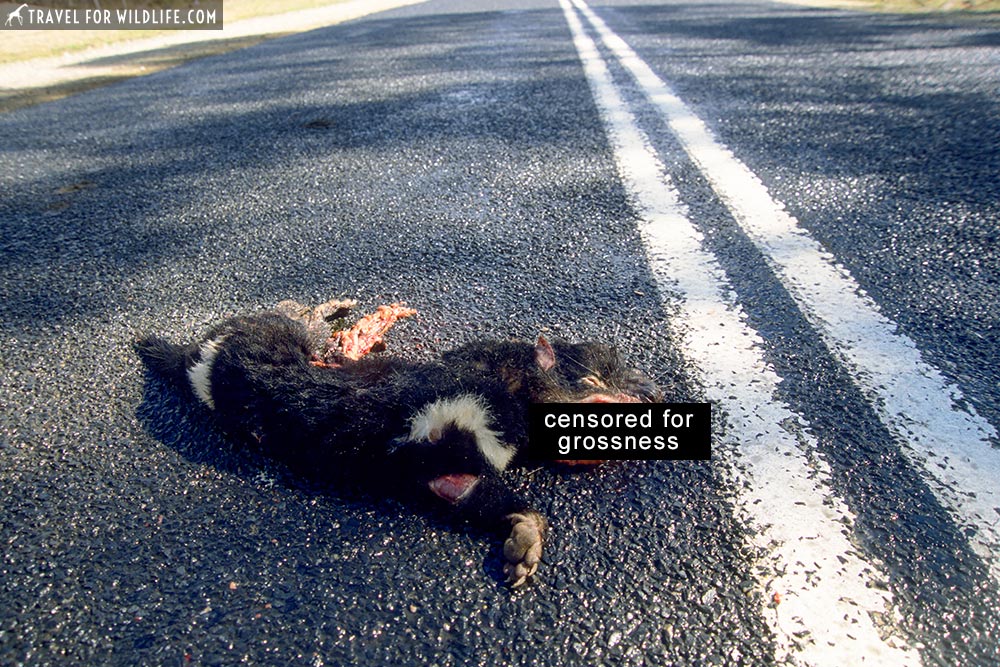
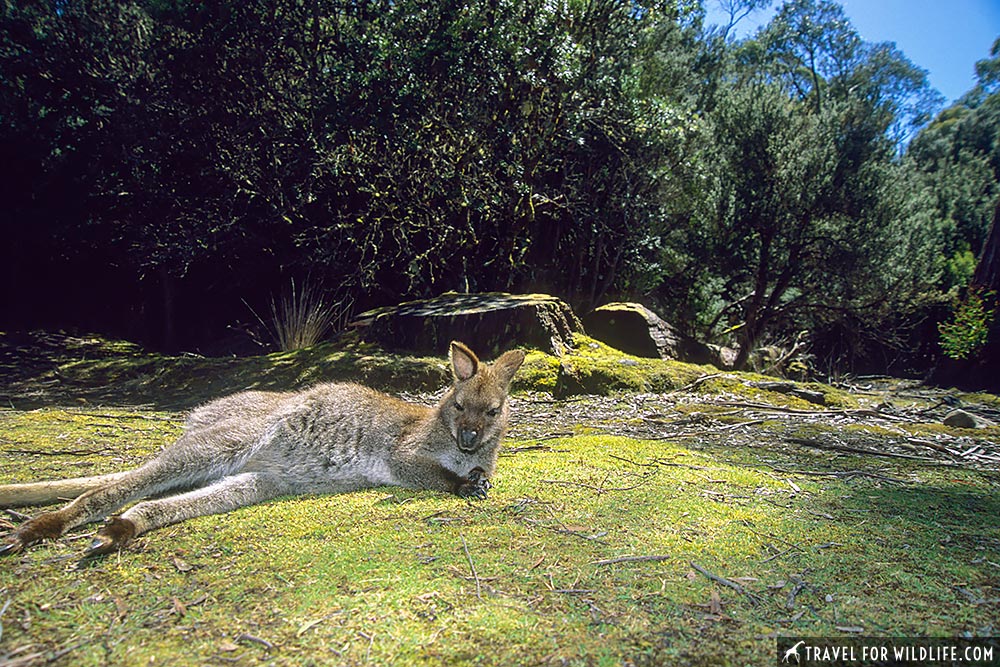
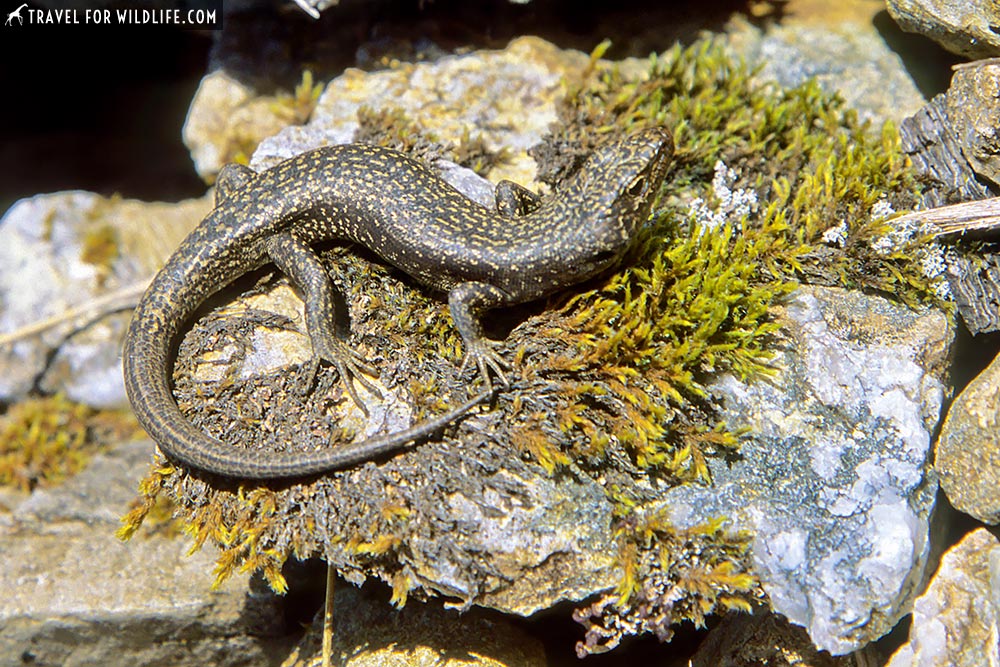
Melbourne & Phillip Island
Arriving in Melbourne bright and early, I head to the Royal Botanic Gardens. In Fern Gully I spy thousands of Gray-headed Flying Foxes roosting in the trees. They poop on my shoulder and on my camera bag but I don’t hold it against them. Multiple mothers are nursing babies, both hanging upside down, and there is entertaining activity all around. But not everybody finds this camp as adorable as I do. Already there is a massive effort underway to relocate the entire camp to a larger park just to the north. (Now you can find them in Yarra Bend Park, check the riverbank at Bellbird Park along Yarra Boulevard.) In a nearby pond, a Dusky Moorhen rounds up her tiny chicks while a Blotched Blue-tongued Skink wriggles its fat body across a sidewalk. It is impressively wildlife filled for a city park!
I sleep at a trashy hostel in St Kilda Beach and then meander down to Phillip Island to visit the Koala Conservation Center. If you didn’t get a good look at koalas on Kangaroo Island, then this is a good backup plan. There are plenty of koalas along the elevated boardwalk affording excellent views. I get my first good look at the koala’s amazing feet (see photo below) as well as a Laughing Kookaburra and a beautiful Superb Fairy-Wren. A quick jaunt to the Nobbies gives me a distant view of Seal Rock and the county’s largest colony of Australian Fur Seals (more than 20,000!) but without taking a boat tour they just appear as tiny dark blobs in my binoculars. I stop for lunch in Cowes and head back to the mainland for my last jog southward.
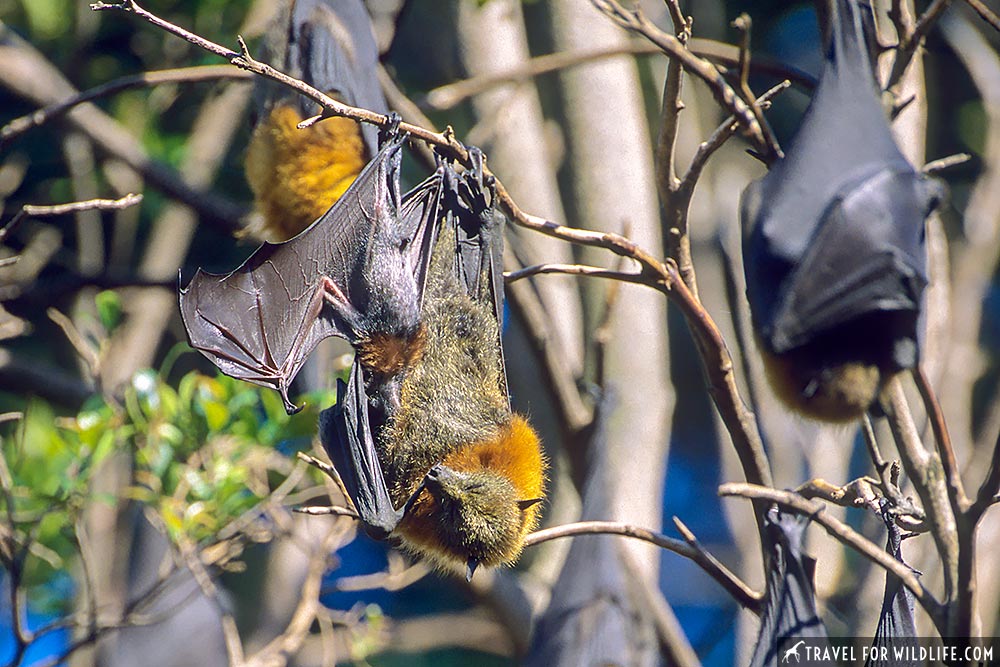
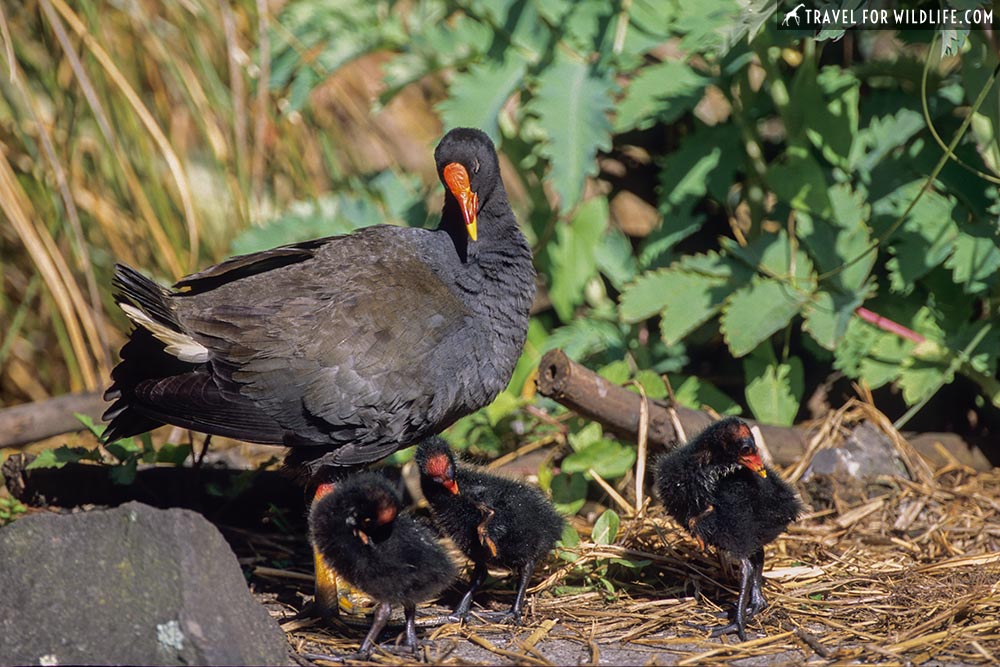
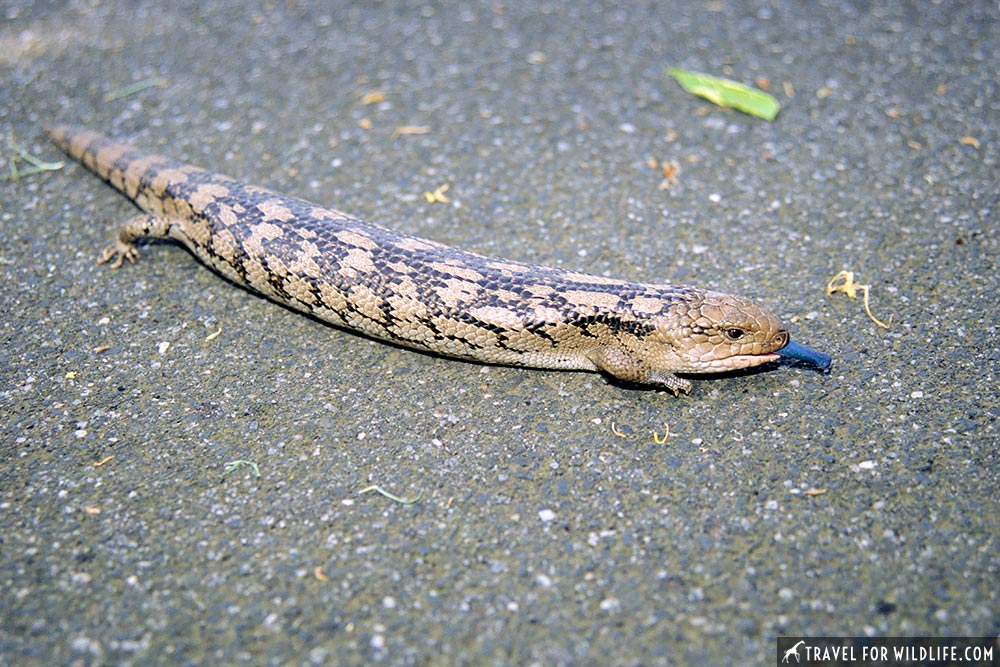
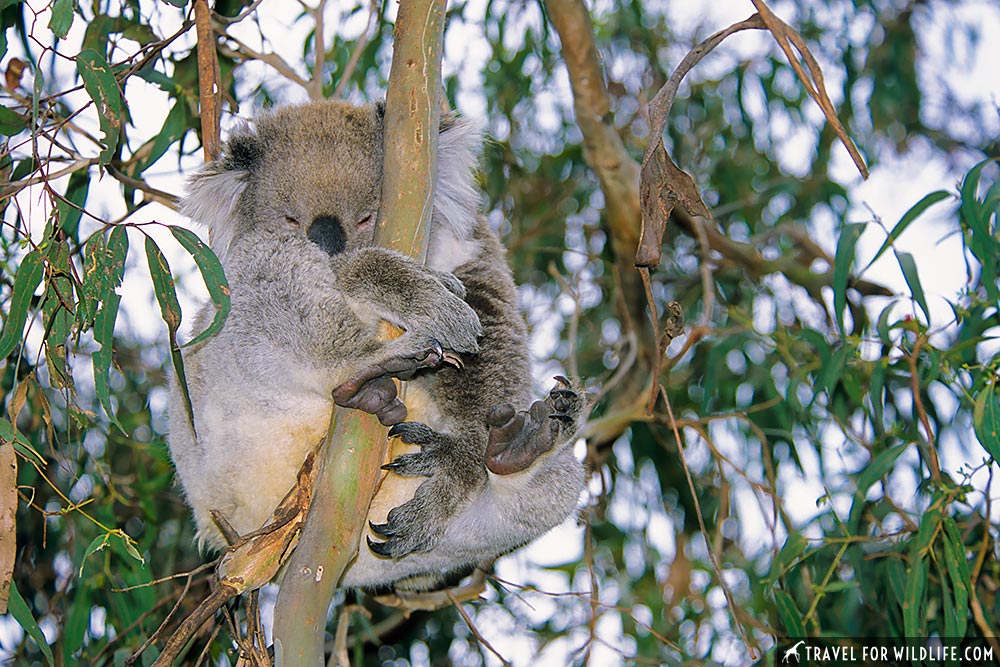
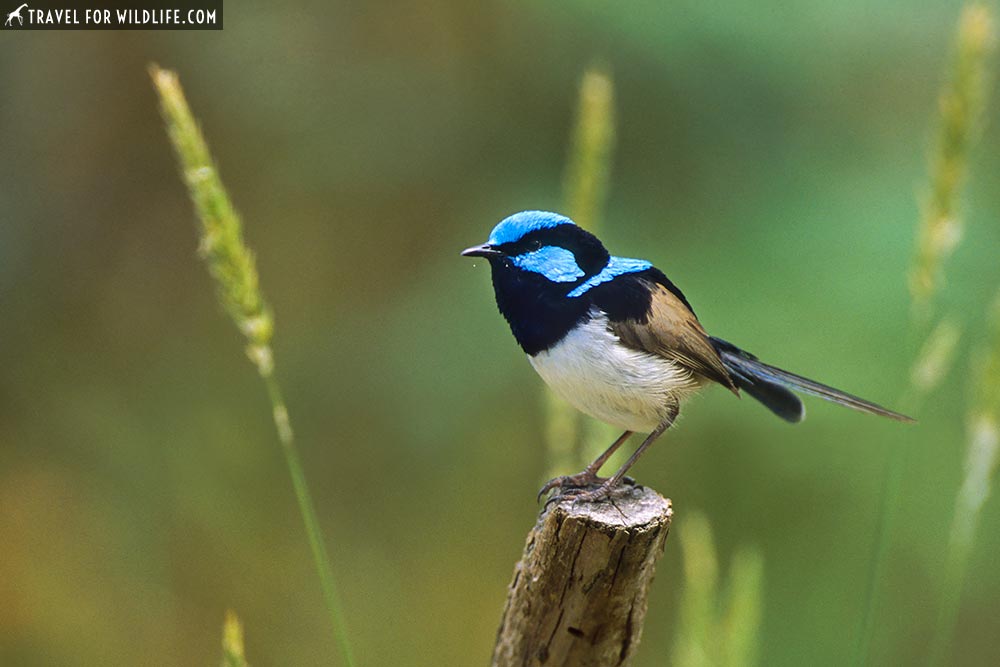
Wilsons Promontory
I’ve now reached the southern most point in mainland Australia: Wilsons Promontory National Park. Immediately I start seeing the animal I’ve come to see: wombats! There are three species of wombats, one of which, the Northern Hairy-nosed Wombat, is critically endangered. The Common Wombat, seen here in Wilsons Promontory is, thankfully, common. They are close relatives to the koala but instead of living an arboreal life munching leaves they are instead adapted to a life of grazing grass and roots and burrowing underground. In fact, the Common Wombat‘s pouch points backwards so it doesn’t fill with dirt when it’s tunneling! I immediately fall in love with wombats and have yet another new favorite animal in Australia. At dusk even more animals come out and it feels like an African safari. I see emus, echidnas, wombats (at least 10), kangaroos, and have my first sighting of the strange Swamp Wallaby, This wallaby is so different from other wallabies (behaviorally and genetically) that it was assigned to its own genus Wallabia. After photographing some really cute wombat crossing road signs I retire to the Fish Creek Hotel.
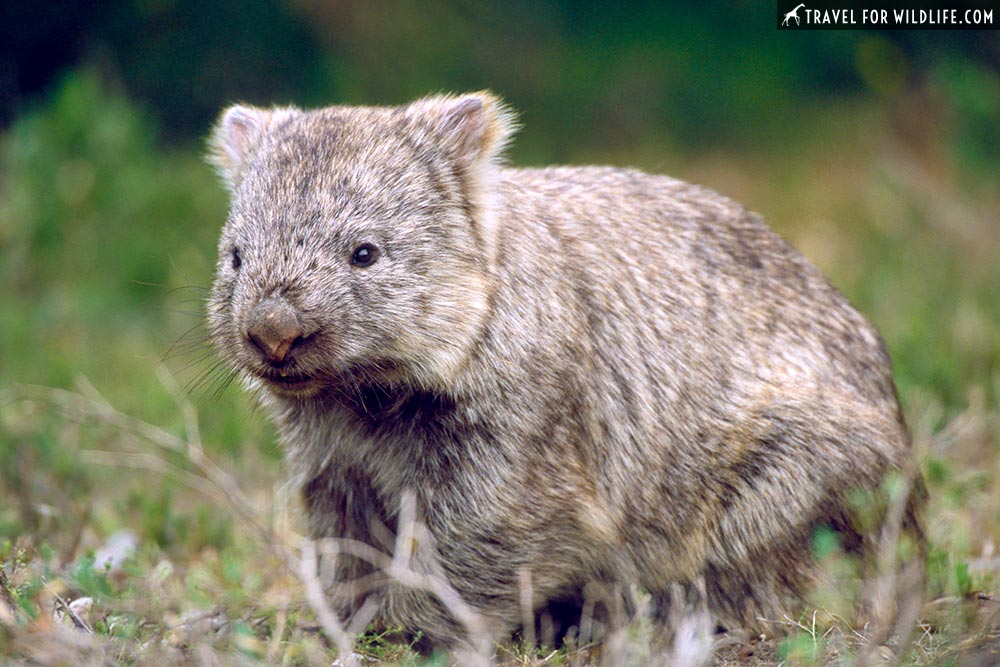
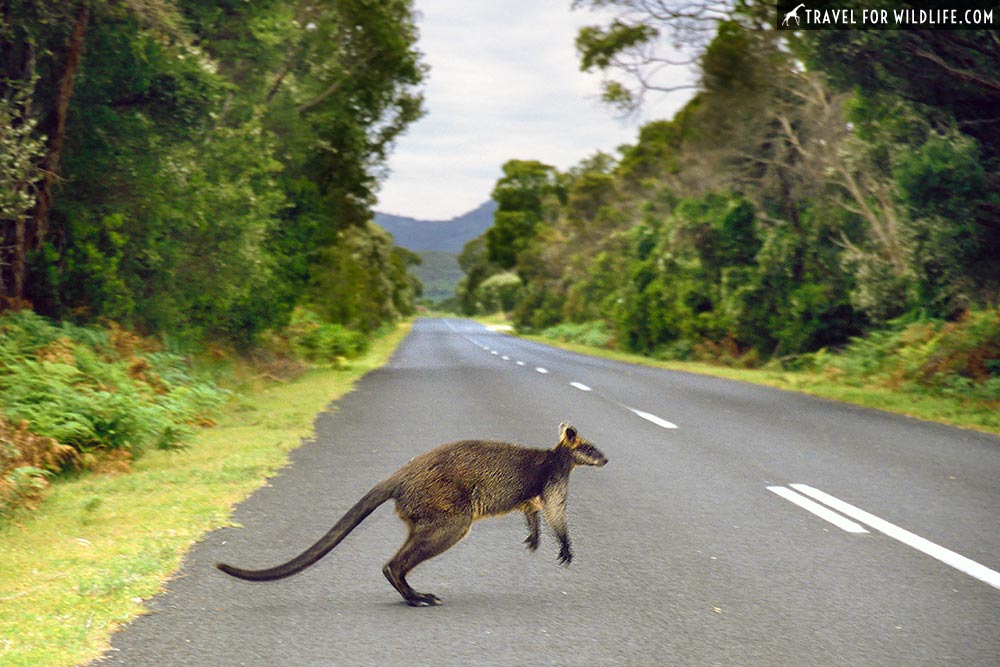
Melbourne to Sydney
For the last leg of my journey I head east on the South Gippsland Highway toward Sydney. Stopping on 90-Mile Beach near Lakes Entrance I have a surprising close encounter with a beautiful echidna on the trail. She is rooting around in the soil with her long pointy snout, totally oblivious to my presence. One month ago an echidna was my very first sighting in the country so it is a fitting end to my Australian odyssey.
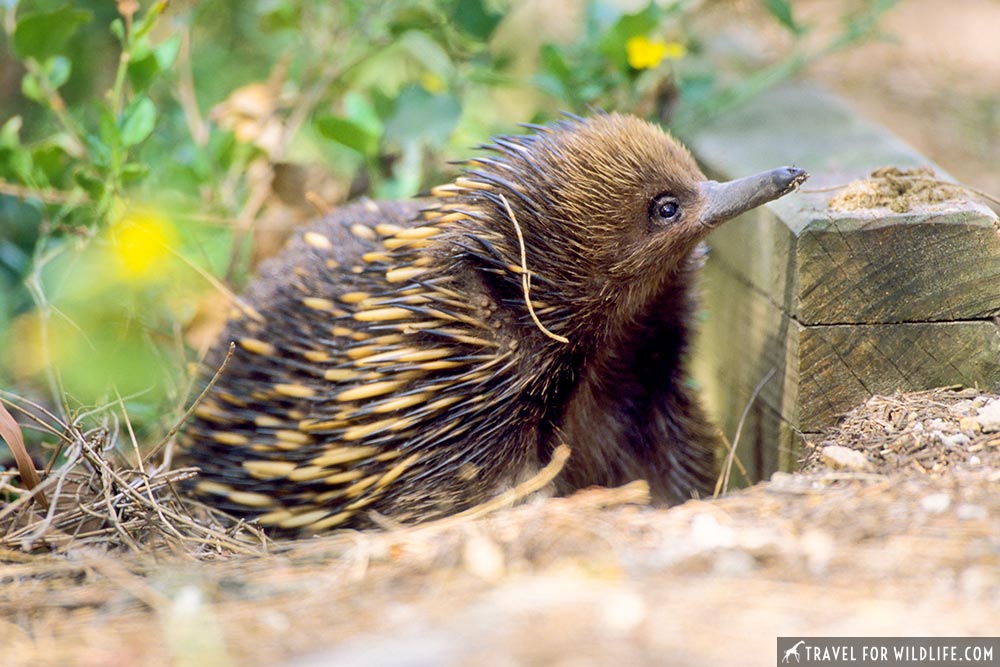
Two More Weeks Please
If I had more time and money I definitely would have added a final leg to my journey up the eastern coast of Queensland to see the Great Barrier Reef and the Cape York Peninsula. Next time around I hope. And this time I’m not leaving until I see a platypus!
Read This Next
Top 10 wildlife tours in Australia: If you are not ready to take a road trip, or don’t have the time, check out these wildlife safaris in Australia.
Did You Enjoy This Article, Where to see Native Australian Animals: an Epic Australia Roadtrip? Pin it!
If you enjoyed this article, then you can use this image to pin it on Pinterest!
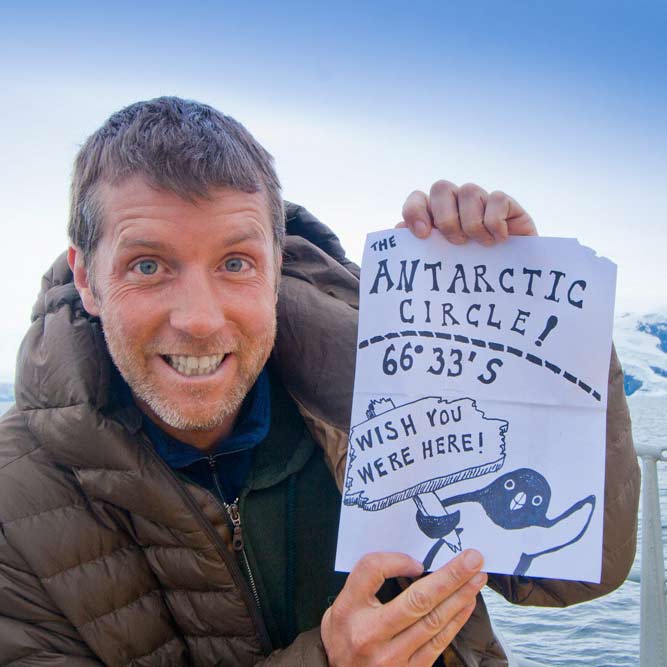
Hal Brindley
Brindley is an American conservation biologist, wildlife photographer, filmmaker, writer, and illustrator living in Asheville, NC. He studied black-footed cats in Namibia for his master’s research, has traveled to all seven continents, and loves native plant gardening. See more of his work at Travel for Wildlife, Truly Wild, Our Wild Yard, & Naturalist Studio.

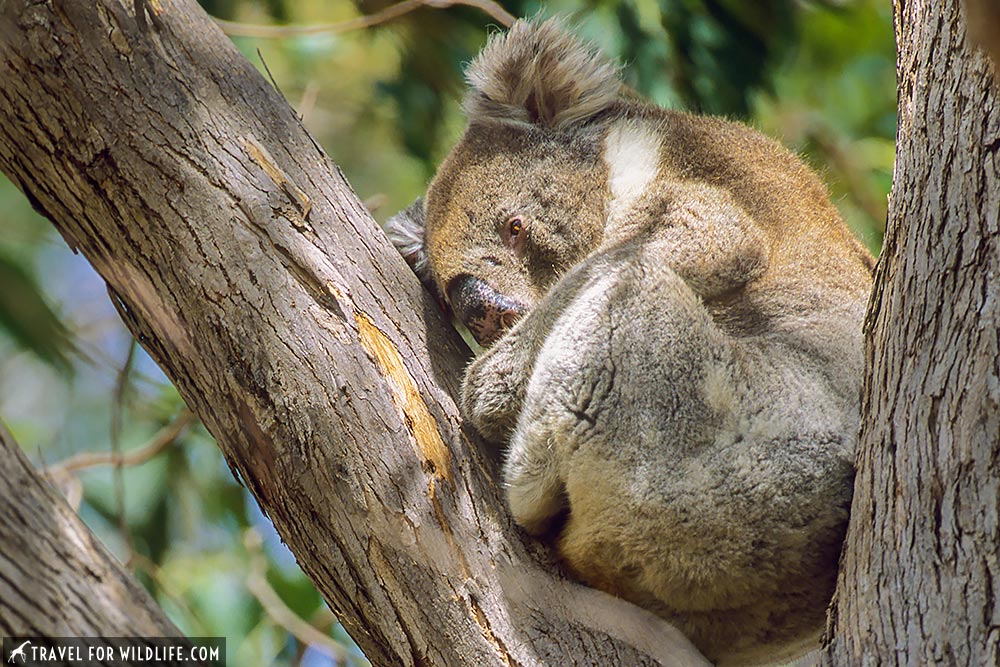
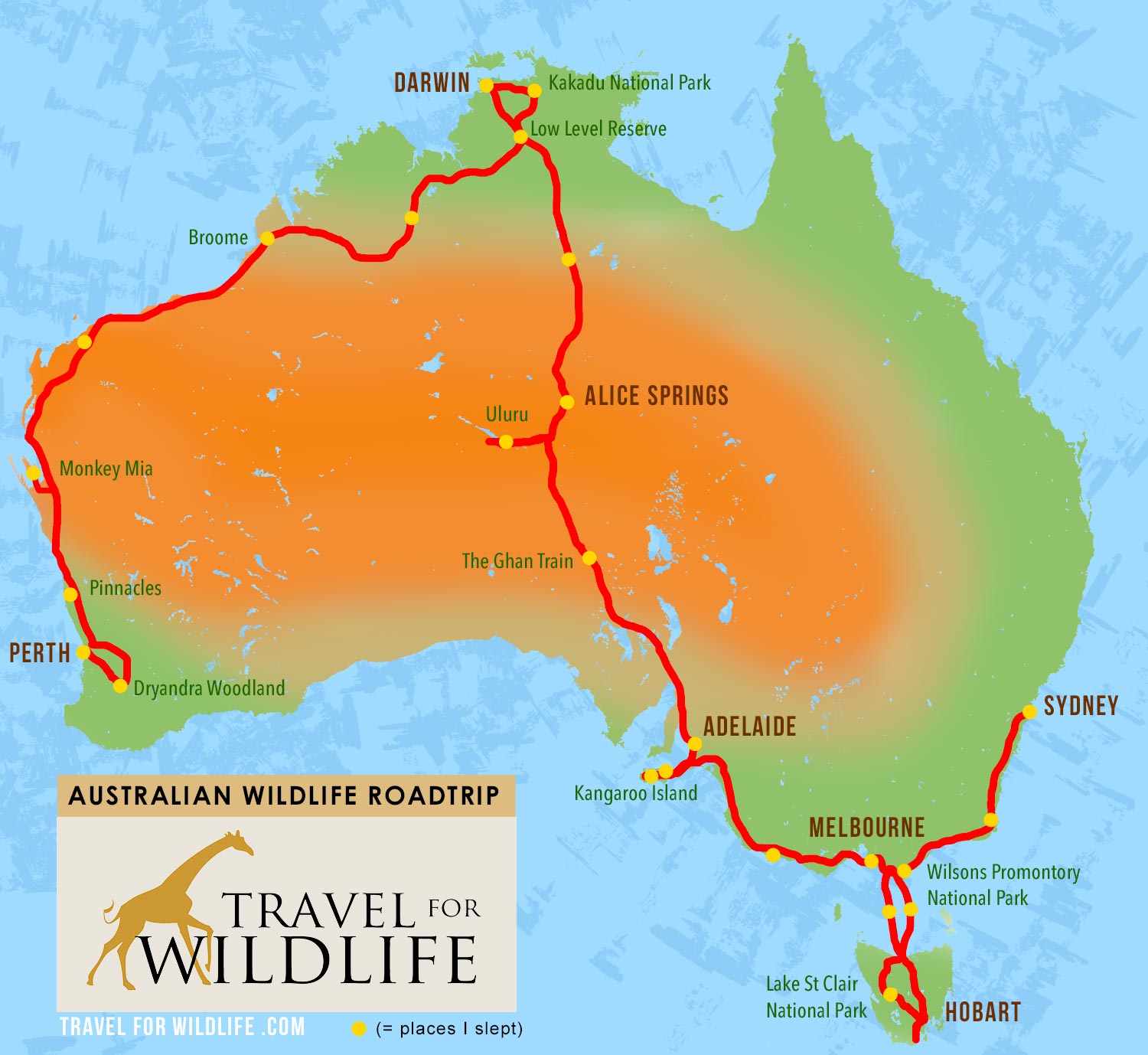
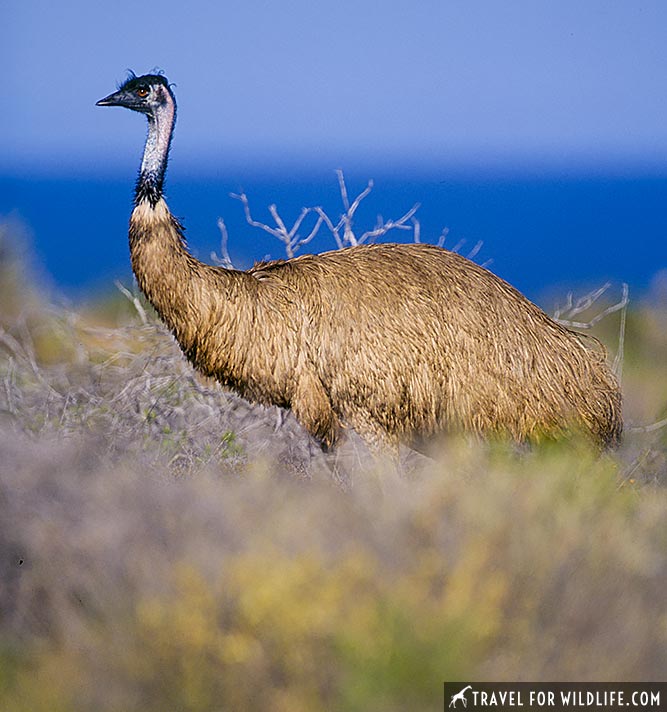
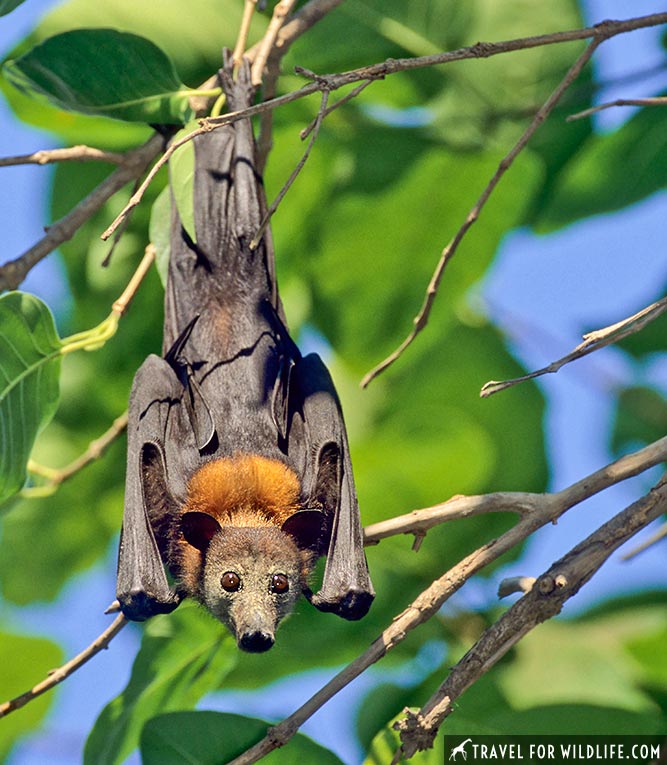
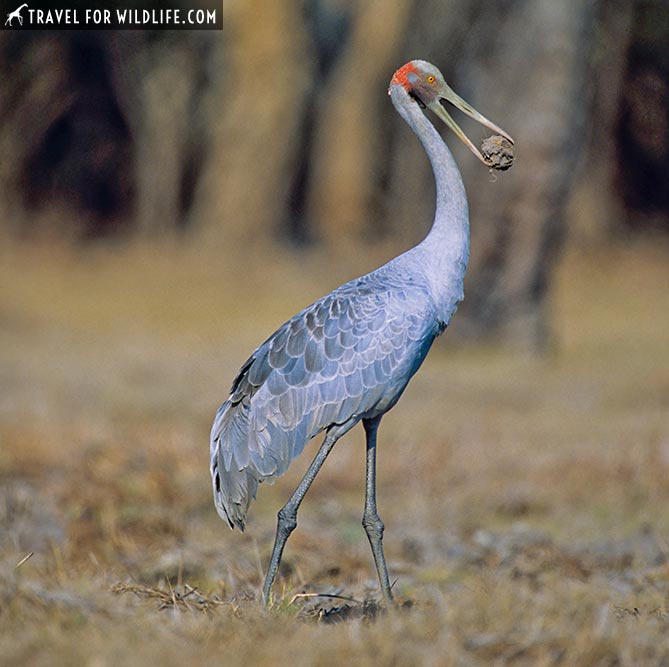
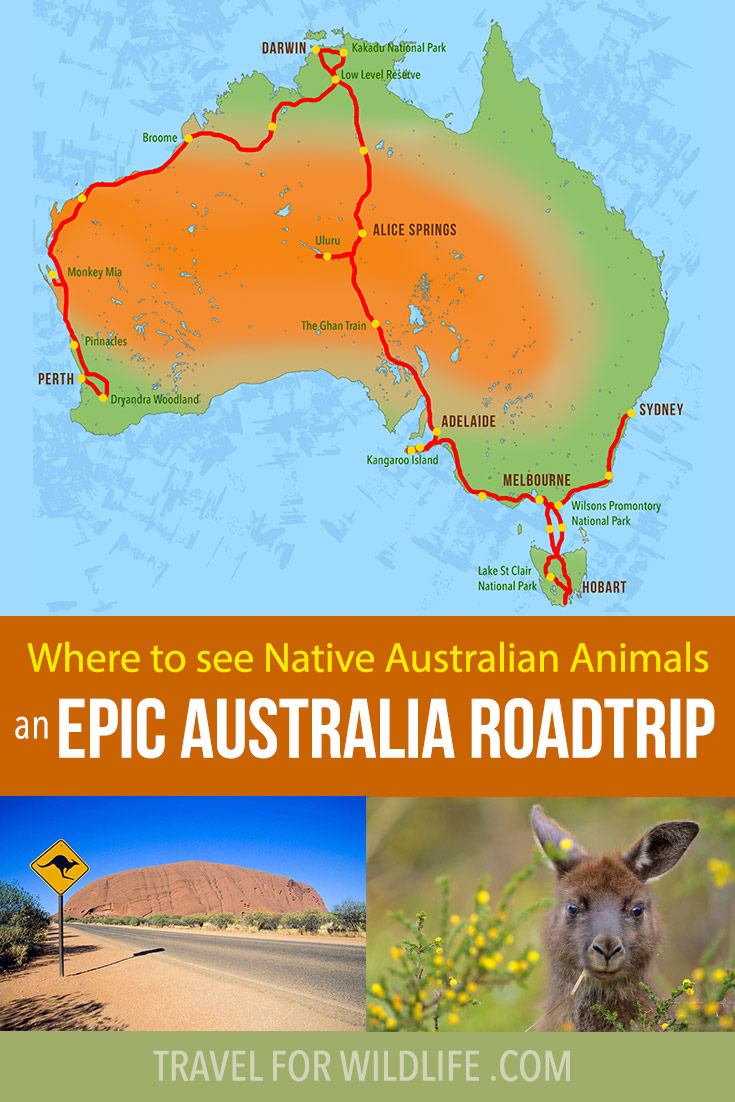
Bruce
Saturday 18th of May 2024
Hal,
What a lovely trip (and amazing photographs) showing the amazing Australian wildlife we have to offer! You covered a lot in such a short time.
You and your readers may be interested that my own business operates tours to see Australian wildlife in the wild @ https://www.sydney-tours.com.au/sydney-wildlife-tours/ if you or they get to Sydney.
Best of luck in your next expedition to Queensland.
All the best Bruce
Natalie
Monday 1st of June 2020
I can't believe how much territory you covered in just one month. We spent about 7 months going around Australia and this still was not enough! Next time you come back you need to make time to visit Maria Island in Tasmania to see wombats, Tasmania Devils and Wallabies. Fantastic!
cristina garcia
Thursday 2nd of July 2020
We would love that!
Simon
Monday 14th of May 2018
This is so cool Hal! Saving (and sharing) this one...
Hal Brindley
Monday 14th of May 2018
Thank you Simon!!